Another WORLD
Exploring the limits of what is possible to find ourselves somewhere entirely new

THE PINNACLE OF LUXURY LIFESTYLE IN CORNWALL
Volume No30 £10.00












01872 306360 info@ rohrsandrowe.co.uk rohrsandrowe.co.uk WITHIEL | NORTH CORNWALL GUIDE PRICE £1,500,000 | EPC E
Drift /drift/ noun

1. the act of driving something along
2. the flow or the velocity of the current of a river or ocean stream
verb
1. to become driven or carried along, as by a current of water, wind, or air
2. to move or float smoothly and effortlessly
3
THE PINNACLE OF LUXURY LIFESTYLE IN CORNWALL
The wonderfully unique and ethereal work of Lexi Laine, simply titled ‘Cardumen’, as featured




CEO
Ben Pratchett – 01326 574842 ben.pratchett@enginehousemedia.co.uk
Editor
Hannah Tapping hannah.tapping@enginehousemedia.co.uk
Operations Manager
Miguel Belert miguel.belert@enginehousemedia.co.uk
Managing Director
Richard McEvoy – 07771 868880 richard.mcevoy@enginehousemedia.co.uk
Content Manager

Rosie Cattrell rosie.cattrell@levenmediagroup.co.uk
Finance & HR Manager

Charlotte Forster charlotte.forster@enginehousemedia.co.uk
Client Director
Jonathan Perkins – 07587 072706 jonathan.perkins@enginehousemedia.co.uk
Creative Designers
Spencer Hawes
Jamie Crocker
PROUD TO BE PART OF
Drift is published by:



Engine House Media LTD

Holbrook, The Moors, Porthleven, Cornwall TR13 9JX www.enginehousemedia.co.uk www.levenmediagroup.co.uk
ISSN 2632-9891

© All rights reserved. Material may not be re-produced without the permission of Engine House Media Ltd. While Drift will take every care to help readers with reports on properties and features, neither Engine House Media Ltd nor its contributors can accept any liability for reader dissatisfaction arising from editorial features, editorial or advertising featured in these pages. Engine House Media Ltd strongly advises viewing any property prior to purchasing or considerations over any financial decisions. Engine House Media reserves the right to accept or reject any article or material supplied for publication or to edit such material prior to publication. Engine House Media Ltd cannot take responsibility for loss or damage of supplied materials. The opinions expressed or advice given in the publication are the views of the individual authors and do not necessarily represent the views or policies of
Credit Control
Tracy Dart – 01326 574842
tracy.dart@enginehousemedia.co.uk
Engine House Media Ltd. It is suggested that further advice is taken over any actions resulting from reading any part of this magazine.
Engine House Media Ltd is a multi-platform media business with a passion for everything Cornish. Visit www.enginehousemedia. co.uk to find out more. Our mission is to create READ-WATCHEXPERIENCE media opportunities marrying together consumers with the fabulous businesses across Cornwall. Our publishing and marketing teams are specialists in creating print and online communications, devised to achieve a range of marketing objectives. With over 20 years of marketing, brand management and magazine experience we develop effective communications that deliver your message in a credible and creative way. We operate across all media channels, including: print, online and video.
On the cover
from page 15. lexilaine.co.uk
Foreword

Pushing the boundaries is something that we have come to expect from the people of the Duchy. Going beyond the ordinary and striving for a point of difference achieves results that are breathtaking in their diversity. Underwater photographer Lexi Laine (15) captures ethereal images in works that often respond to the human impact on the marine environment. Master sculptor Jeremy Stiff (27) combines the abstract and figurative with a residency in Cornwall this year that will create a body of work focussing on drawing and stone carving pods and vessels. Culinary artistry is no less of a craft as James Strawbridge (39) proves in his new book that is a love letter to the humblest of condiments; salt. The combination of skills-based instruction and unique recipes elevates this humble ingredient
to new heights. Taking a step out of the circle of comfort often makes for firsts, as is the case with a new touring exhibition that will arrive in Falmouth later this month. Falmouth Art Gallery (78) will host the exhibition The Legend of King Arthur: A Pre-Raphaelite Love Story, bringing together a series of paintings to be shown together for the first time in the UK. Another first, is the collaboration between Barnaby’s (92) and Trevibban Mill. Forced to find a new home in the face of adversity, this culinary pop-up is proof that looking beyond the obvious and daring to be different has benefit for all. The Lost Gardens of Heligan’s story (110) is the epitome of how passion and endurance can bring a place to life. Join us as we celebrate all of these journeys with visual tales of wonder.
Our contributors





Join our team

We have an exceptional and loyal team here at Leven Media Group but as a fast growth business we’re always interested in talking to outstanding individuals. If you’re a superstar of extraordinary talent then we would love to hear from you.

We invite you to continue your lifestyle voyage online. Find inspiring stories and uncover more luxury content on Instagram @driftcornwall. Join our exclusive e-journal community at drift-cornwall.co.uk to receive recipes, reviews and insider knowledge of some of Cornwall’s most-loved luxury destinations.


TEAM
Call Richard McEvoy on 07771 868880 or email richard.mcevoy@enginehousemedia.co.uk Visit drift-cornwall.co.uk to read more about our writers Proud to sponsor THE PINNACLE OF LUXURY LIFESTYLE IN CORNWALL drift-cornwall.co.uk driftcornwall
Martin Holman
Rosie Cattrell
Hannah Tapping
Rebecca Hawkey
Lucy Studley
Mercedes Smith




COASTAL | COUNTRY | TOWN | MODERN | PERIOD ST
| WEST CORNWALL | GUIDE PRICE £1,850,000 | EPC D rohrsandrowe.co.uk info@rohrsandrowe.co.uk 01872 306 360
IVES




COASTAL | COUNTRY | TOWN | MODERN | PERIOD PENZANCE | WEST CORNWALL | GUIDE PRICE £1,100,000 | EPC E rohrsandrowe.co.uk info@rohrsandrowe.co.uk 01872 306 360
























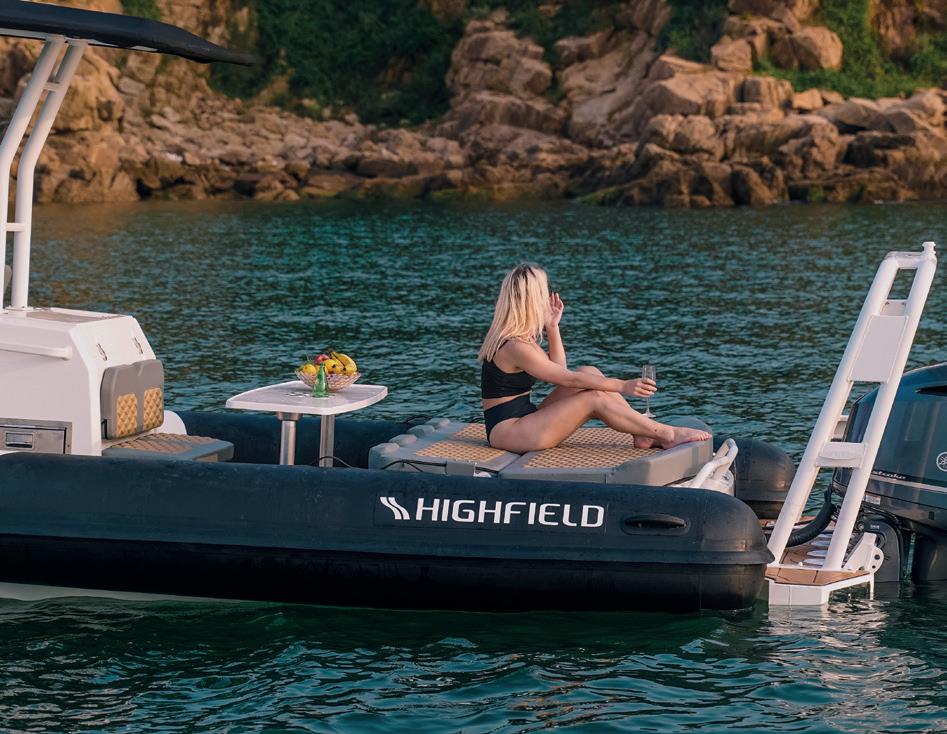















27 15 72 120 51 101
At a glance
85
A
92 AMONGST THE VINES
Barnaby’s are back for the summer
101 PAINTING ENERGY
Transported in time by Denzil Forrester
110 THROUGH THE LOOKING GLASS
Into the magical world of Heligan
120 OCEAN ADVENTURER
The Sport 900 from Highfield
122 EVENTIDE
A final word from Carl Rowlinson
CONTENTS 13 15 ANOTHER WORLD Under the surface with Lexi Laine 27 ARTIST IN RESIDENCE A new collection from Jeremy Stiff 39 HIGH SEASON Recipes from James Strawbridge 51 A FINE INSTITUTION Step into Mannings in its 30th year 63 LAND, SEA AND SKY What does the beach mean to you? 72 LUXURY HOMES At the pinnacle of the Cornish market 78 A PRE-RAPHAELITE
STORY
for The Legend of King Arthur
LOVE
Falling
A MAGICAL HISTORY TOUR
unique insight into the world of Poldark

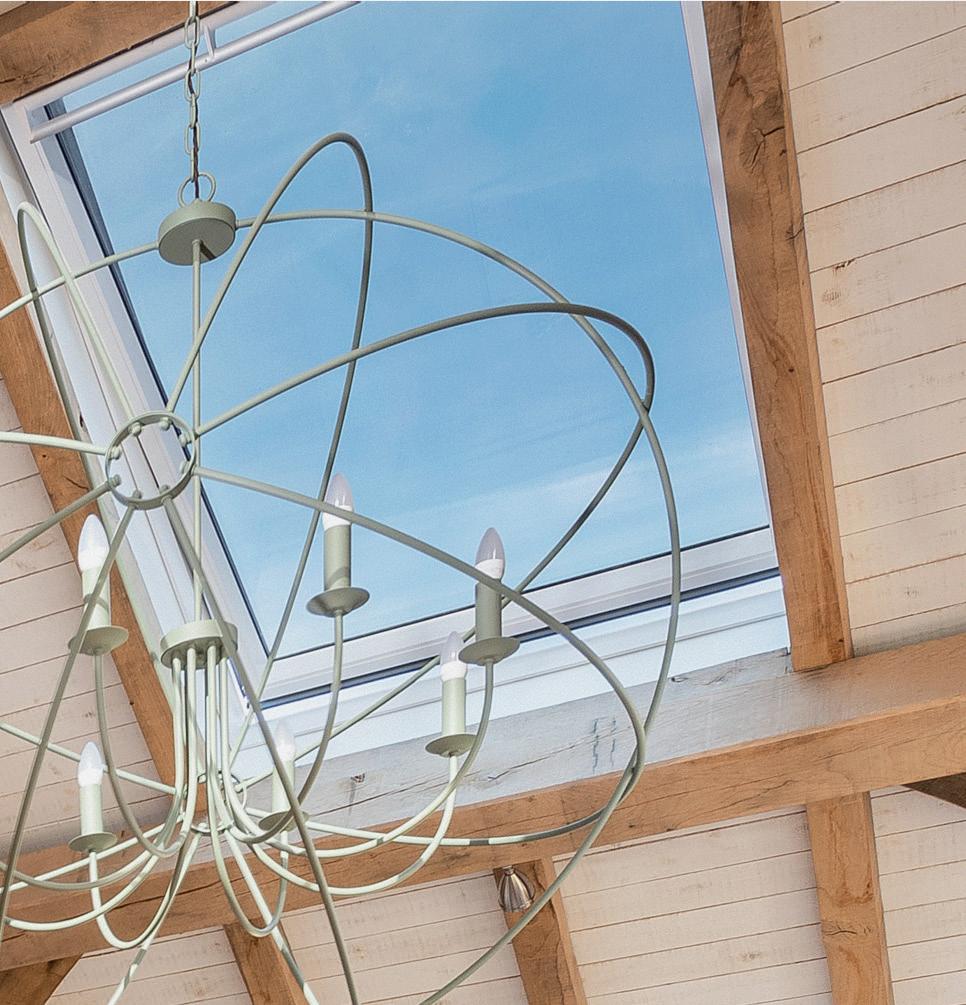
















(Previously Carpenter Oak Cornwall) Beautiful timber buildings | 01326 336554 | www.post-beam.co.uk | hello@post-beam.co.uk
WORLD Another














 WORDS BY ROSIE CATTRELL
WORDS BY ROSIE CATTRELL

Having been drawn to the underwater world since childhood, fascinated by marine life and visions of Cornish mermaids lurking in tide pools, the work of Lexi Laine caught my attention instantly when I happened upon her last year. Capturing ethereal scenes of women lost in private watery realms, there is an otherworldly feel to her work that leaves me longing to float.
Lexi studied BA Fine Art at the University for Creative Arts in Canterbury, and since then has built a career as a photographer and artist, winning The Beautiful Bizarre Art Prize iCanvas Photography Award in 2020. Awarded ‘Image of the Year’ by Photography Farm two years in a row in 2018 and 2019, not to mention being sponsored by Sony UK in her recent behindthe-scenes documentary ‘Under The Surface’, Lexi’s work takes her all over the world, from the magical cenotes of the Yucatan peninsula in Mexico, to fondly familiar Cornish shores.


With several years of freediving training behind her, Lexi prefers to immerse herself into a shoot on a single breath alongside trained freediving models, away from the distraction of scuba equipment, as she explains: “I choose to undertake all of these projects whilst freediving because it gives me a better connection with the people that I photograph and also with the environment
in which I work. Together we experience the thrill of holding our breath and diving deep down into our underworld. It is here that I feel the most alive and in touch with myself as an artist.”
Human impacts on our marine environment, alongside influences of 17th and 18th century baroque painting and themes of myth and folklore thread their way through Lexi’s portfolio, bringing together surreal contradictions and blurring the boundaries between fantasy and reality.
“I greatly admire the aesthetic of renaissance and baroque artists and the way they used light to add drama to the scenes they depicted,” she continues.
“I am drawn to creating a visual narrative where the women in my images become characters from surreal stories, and there’s often an apparent journey in the images I create; in some she floats towards the light in an eerie suggestion of traveling from one world to the next; in other scenes, she is being consumed, a representation of vulnerability and a reminder of the incredible force of water. I look to bring out her feelings of euphoria and of melancholy, with an aim to transport the viewer into these dreamscapes so that they can find in these images their own fears and fearlessness.”
FOCUS 16
lexilaine.co.uk
PREVIOUS Porthmeor RIGHT
In quiet depths of calm solitude, Lexi Laine takes us to another world entirely, below the surface of waters we thought we knew.
Angelita



ABOVE Plastic Pollution

ABOVE Invincible Summer

ABOVE Tendrals RIGHT Cardumen


ABOVE Prussia

We are homemakers.
We are known for creating exceptional bespoke homes that are uniquely designed to suit our clients, their lifestyles and the location.

From our studios, we work on projects across the South West and the UK, as well as overseas.
15 North Street, Ashburton, Devon, TQ13 7QH Tel: 01364 654888 www.woodfordarchitecture.com

WOODFORD ARCHITECTURE INTERIOR DESIGN


lexilaine.co.uk TOP Ophelia ABOVE Tidal

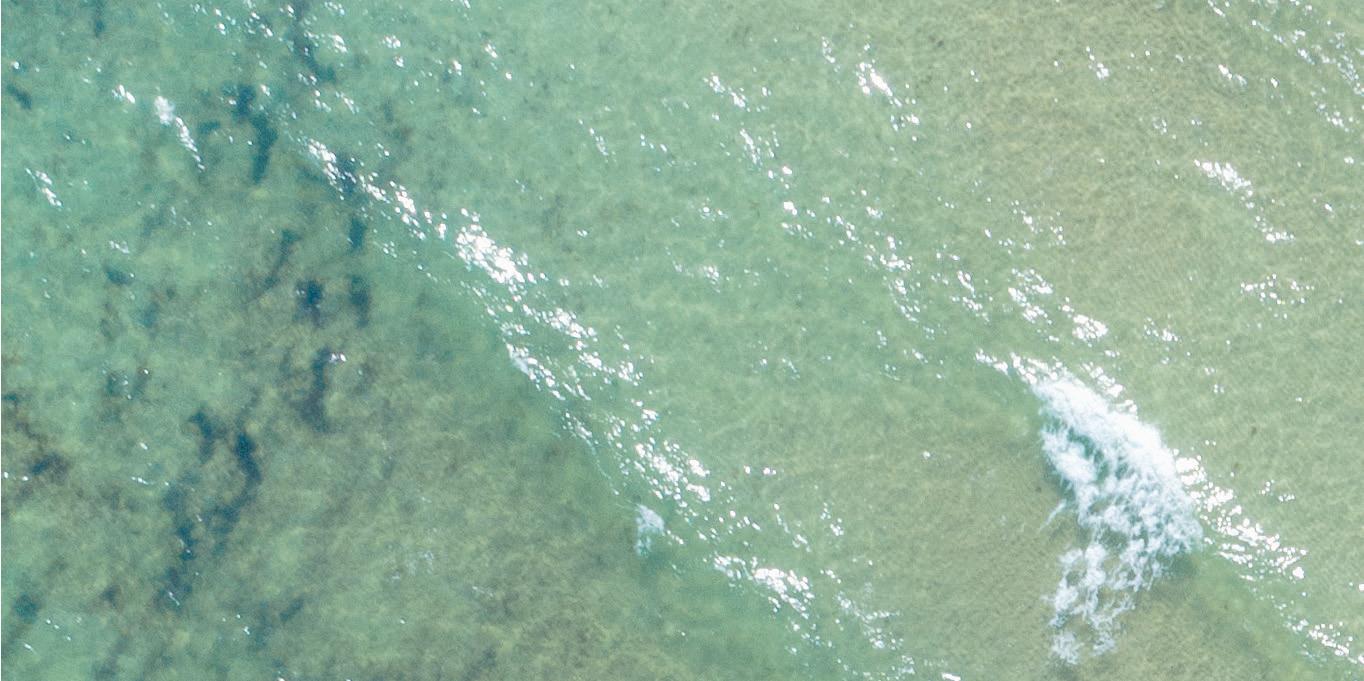





SUSTAINABLE ARCHITECTURE SUSTAINABLE CONSTRUCTION arco2.co.uk addsc.co.uk
Artist in RESIDENCE






















 WORDS BY MERCEDES SMITH
WORDS BY MERCEDES SMITH
Master sculptor Jeremy Stiff returns to Cornwall, his childhood home, to inspire his latest collection of work.

This June, the Bohago Estate in Cornwall hosts an art residency by sculptor Jeremy Stiff, a skilled craftsman whose beautiful work strikes that elusive and thrilling balance between the abstract and figurative. Jeremy was born in London but raised in Cornwall, and as a sculptor he has made his mark in the UK and Europe over a thirty-year career, creating site-specific works and gallery collections. He now lives in the spectacular setting of Bannau Brycheiniog in Wales, in a farmhouse he shares with his wife, still-life painter Menna Angharad.
The focus of Jeremy’s Cornwall residency will be drawing and stone carving, with a focus on vessel and pod forms, “although this could
change while I am working there,” says Jeremy of the residency process, which by definition invites artists to stay and respond freely to the stimulus of a new place. “They have given me a lovely old openfronted tin barn to work in” he tells me, “and I am hoping to go out most mornings to draw and sketch, and will then spend my afternoons in the barn. We will see.” Bohago is a private residence, with no public access, but Jeremy’s work will be exhibited at Cornwall’s Whitewater Gallery this summer and will give collectors an insight into the unique visual language and mastery of materials that define the world’s very best sculptors.
These are talents that take time and significant experience to acquire. “During my 20s,” says Jeremy, “I worked as a carpenter in
CREATE 28
PREVIOUS
INSET
Correzian granite vessel VI
Jeremy Stiff in his studio








































TOP
Jeremy’s studio in Wales ABOVE
Carrara marble block ready for carving






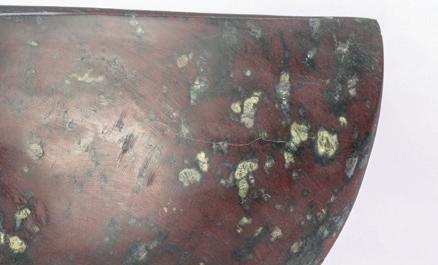












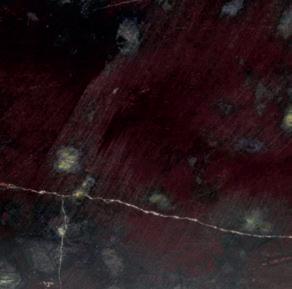








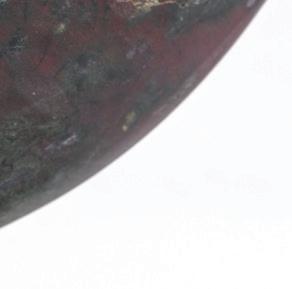



TOP
ABOVE
Cornish serpentine vessel
Cornish serpentine vessel detail
and around London, but in my 30s I gradually reconnected with my childhood love of making art. I took an art foundation course at East London University and a second one at City Lit in Holborn, and from there I joined a figurative sculpture course in Stafford. My choice to study sculpture followed on from my lifelong joy of making things, but the transition into crafting sculptural objects became a search for meaning in a process of making not constrained by usefulness or function. Sculpture has become my way of transposing my feelings into material being. My work doesn’t often have an intellectual beginning, it comes from feelings and thoughts that reside in me and from my appreciation of the materials I choose, so my art starts primarily with the formal process of capturing the fundamental shapes that I see in my subjects. My way of approaching sculpture does not exclude the conceptual nor the intellectual –I think the opposite is so – it embraces and, I hope, enriches the conceptual in my work.”
Jeremy’s recent focus has been on boat and vessel forms, and has resulted in an elegant and refined collection of small to mid-scale works in Carrara Marble, Cornish Serpentine, Welsh Limestone and Egyptian Porphyry, with the qualities of each stone adding significantly
to the beauty of the sculpture. “There is a solidity to my work,” says Jeremy, “though my subject is usually something that ‘contains’, that places the viewer on the outside, trying to imagine what secrets and mysteries are on the inside. Boats, for example, are hollow, but my boats don’t need to be hollow; their being solid nudges them into the sculptural rather than the functional. I enjoy this intriguing contradiction.” Ideas of contradiction have been key to the creation and form of sculpture over the centuries. You need only consider the muscle and sinew of Michelangelo’s David, or the feminine contours of the Venus de Milo and the swathes of fabric that clothe her, to understand that the power of these sculptures lies in the contradiction of sensuous form hewn from solid marble.
The act of creating sculpture also follows that narrative: it is a physically demanding, often violent act, a heavy interaction between artist and material that produces something wondrously still. When you look at Jeremy’s perfect sculptural forms, it is hard to imagine that such quietly enigmatic works have emerged through intense handcraftsmanship in a studio full of dust and the echoes of tools on stone. “My workshop is special because it is entirely my domain,” Jeremy tells me. “It
CREATE 31

ABOVE Carrara vessel
gives me space to think, to make a mess, to experiment, and it has all the tools I need. I only allow influences in it that are conducive to working efficiently. It’s not very big, has a leaky roof, not enough windows, is often cold and it has far too much stuff in it, but I always enjoy entering my making space. I look at my drawings, at recent works, perhaps at my feelings and memories, and then I will start to peruse my materials to see what seems appropriate. This is the moment when the physical work begins. As I suspect is true for most artists, this moment of starting the ‘real’ work is a great relief. I enjoy the process of making, it’s like a meditation, a total commitment to that moment and to that piece of work. I relish exploring the formal qualities of my material, its texture, colour and density, how it cuts, the grinding, peeling, slicing, and the different marks that my tools make. Unveiling a piece of stone is both limiting and endless, and the natural and manmade faults all play a part in what is possible.”
Some sculptures, he tells me, may be finished in one or two sittings, while the creation of others may go on for days or even months. “Some I never finish,” he adds. “Choosing when a work is finished can be problematic. Each cut or mark is an opportunity, so having an idea of where you want that piece to end up can be
useful in deciding its finished state. However, transitional stages can suggest a different moment to finish, sometimes completely at odds with what I had first envisaged. The opposite can also be true though – sometimes I lessen a piece by focusing on the end and not realising its opportunities.”
The junctions between Jeremy’s different bodies of work, or between different periods of work, are often bridged by the materials themselves, perhaps by a particular wood or stone, as opposed to an idea. “I am material led,” says Jeremy. “My ideas often come from the materials rather than the other way round. Much of my work is small, of a handheld size, and I enjoy picking these pieces up and looking closely at the material qualities I can see and touch. This touching of the work is part of my process. The business of abstract thought about my work is for others to interpret through their hands, feelings, or intellect, but abstraction and my tactile connection to the material are integral to the making process. The poetry, when I am lucky, is in the making and in the final object. I leave the interpretation to the viewer.”
As a master sculptor, Jeremy has a clear view of his position, and the position of sculpture in the wider art scene, as it becomes a focus
CREATE 33





































TOP Limestone vessel ABOVE Egyptian
II
porphyry vessel
Tel: 01208369007 QuarrymanSide
Web: www.cornwallkitchencompany.com






Email: info@cornwallkitchencompany.com

Office, Edmonton, Wadebridge
Cornwall PL277JA







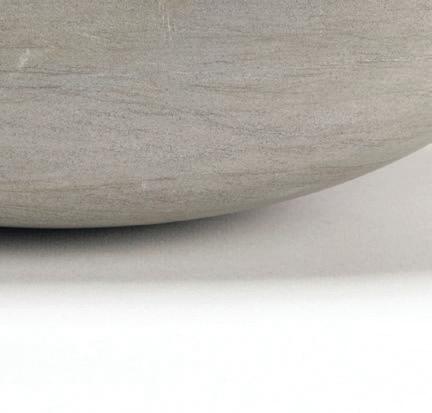























TOP
ABOVE
Grey Welsh limestone vessel
Egyptian green rice porphyry vessel
for the 21st century revival of craftsmanship and the handmade. “In both the Welsh and the wider contemporary sculpture scene I recognise that there is a resurgence in the use and appreciation of natural materials,” he says. “More and more I am seeing youngsters coming through the art education system embracing traditional skills and mediums. I think that my work is part of that reconnection – not as a rejection of the modern – but as an inclusion of the old with the new. I hope that people will gain some feel for the beauty of our material world when they look at my work. I hope they want to touch and feel that material beauty and perhaps, through this
sculptural encounter, feel something unique. I would like people to enjoy the formal qualities of my materials and shapes, and through this appreciation reach a space or moment of abstract beauty. This ‘place of no name’ is always what I look for in other people’s art, and is what I aspire to achieve in my work.”
Jeremy’s residency in Cornwall runs from 19th to the 30th of June 2023. For information on the resulting collection and other works see jeremystiffsculptor.co.uk and whitewatercontemporary.co.uk
jeremystiffsculptor.co.uk

CREATE 37
ABOVE Marble chips





MADE IN CORNWALL – FOR OVER 30 YEARS 01209 215 759 | enquiries@philipwhear.co.uk | www.philipwhear.co.uk
High SEASON
 WORDS BY HANNAH TAPPING
WORDS BY HANNAH TAPPING
James Strawbridge’s new book, Salt and the Art of Seasoning, demystifies the use of this everyday condiment, elevating it from a simple table addition to a key, vital ingredient. James explains: “I’ve always been struck by quite practical books. Most of the books I’ve written over the years have tended to be instructional and skill-based rather than following foodie trends. Salt is one of the seasonings we use every day, changing the way other food tastes.” Going against the grain of the narrative of salt being bad for you, James is at pains to make a distinction between the benefits of naturally occurring salt and the sodium chloride variety. While the chemical version, table salt, has no benefit, naturally occurring salt is a chef’s best friend. “However,” says James, “there’s often a gap of knowledge in that most chefs have an understanding of the
importance of salt, but don’t necessarily know why this is so.















“Salt can be something of a passport to travel. In the same way you get a journey with spices, the same can be said from salts from around the world –each with a distinctively different flavour. I find it a very exciting ingredient, especially living in Cornwall. Being near the coast, you’re constantly splashed with sea brine as the wave crashes; or you taste foraged sea vegetables that have innate embodied salt; even the fish that’s caught here needs nothing more than a pinch of salt and a squeeze of lemon to really come alive. So, I think that as an ingredient it’s magical, almost alchemic in the way it takes an ingredient and instantly transforms its flavour.

CUISINE 40
INSET
How a precious and ancient resource elevates flavour from good to great.
James Strawbridge
© Two Rivers Media



























 © John Hersey
© John Hersey
© James Strawbridge
© James Strawbridge
© James Strawbridge
© John Hersey
© John Hersey
© James Strawbridge
© James Strawbridge
© James Strawbridge
DREAM OF HAVING A LUXURY OUTDOOR LIVING AND DINING AREA?


Why not add another living space to your home with a bespoke outdoor kitchen.

Experts in outdoor spaces, we’re here to help you create your unique outdoor living space, from design through to your completed outdoor kitchen.

Our team are with you from start to finish.




CONTACT US THE SAIL LOFT FERRY STREET TORPOINT PL11 2AX TEL: 01752 422281 INFO@CONTEMPORARYOUTDOORLIVING.CO.UK WWW.CONTEMPORARYOUTDOORLIVING.CO.UK
“For example, while shop-bought unsalted butter can be fantastic for baking, you can’t beat homemade salted butter. Simply whisk double cream until it separates, add a pinch of sea salt to it and use to create amazingly tasty veg. We’re just coming into a really exciting time of year now. We’re about to say goodbye to asparagus, and welcome the tomato season. I can’t wait for those beautiful salads, and a pinch of salt is what can really make a difference to bringing out the innate natural flavour.”
Salt is not only a natural flavour enhancer, it’s also a natural preservative, and can be used to lengthen the time you can store fresh food. The art of salting is something that James goes into in detail in the book, as well as creating your own flavoured salts. “You can even make your own salt first,” explains James, “just out of sea water, and in terms of making your own flavour, it’s probably one of the most simple, straightforward but also satisfying things to do and preserves the flavour of the season. For example, wild garlic in Cornwall is just reaching the end of its season. The wild garlic flowers are incredibly fragrant; if you blitz them with salt or even some fresh mint, you have the most exquisite mint salt. You can do the same with any leftover spices, such as mace or nutmeg, perfect for adding during cooking or for finishing a dish at the table.”
A favourite dish for James has to be salted sardines: “I feel they unite us with local history and Cornish heritage via the pilchard industry; sustainably sourced,
fished out of Mounts Bay, landed in Newlyn, you can’t get better. It’s a great way of almost stretching back in time but finishing the food in a modern way that links you to the past. Another favourite from the book has to be the rainbow pickle plate which is pretty radical. So, it’s basically taking whatever is fresh in the garden or allotment, pickling it using salt to absorb some of the moisture which keeps the veg crunchy, and then serving with a bit of butter and some extra seaweed salt – it’s just perfect as a palate cleanser or a light lunch.
“The book has been an opportunity for me to showcase some dishes that I love rather than trying to do fancy food. What I really wanted the book to do was to urge readers to truly embrace the notion of salt craft. I wanted to showcase salt skills and an understanding of what salt can do so that this could be applied to other family favourites in recipe book collections with a fresh perspective. I’ve deliberately kept the food honest and straightforward because it’s not so much about recipes this time for a change.
“Yes, it is a recipe book and hopefully there’s things in there that people will enjoy cooking, but it is more of an approach to cooking, with a little more theory involved. I wanted to capture some of the. romance around salt. It’s so evocative and has been incredibly important ritually over time. Its history is so rich, I wanted to make sure that it felt a bit like a love letter to salt.” strawbridgekitchen.com
CUISINE 43
Salted Cornish Sardines and Tomato Salad

Some dishes originate in a place rather than from a person. This recipe is a celebration of the history of Cornwall and the quality ingredients still available here today. When it is sardine season out in Mount’s Bay, the Newlyn fishing fleet catch plenty of oily sardines. Known as pilchards by the Cornish, sardines are a great sustainable fish option and they respond very well to intense heat under the grill or on the barbecue.
HOW TO DRY CURE SARDINES
Salting sardines, or pilchards as the Cornish call them, has shaped the local landscape where I live. Local beaches and streets bear the names of ‘palace’ and ‘cellar’ to indicate they used to be where the oily fish were salted and pressed. There are even huer’s huts dotting the coastline where lookouts would shout to the local fishing boats when a shoal was spotted in the bay.
To me, salting sardines is a simple act of timetravel that we can all have a go at. Sardines can
be lightly salted to eat in a day or so, or heavily salted to be stored for a long time. I tend to cure my sardines for between 3–5 days if I’m using them in a stew or a sauce and for just 12–24 hours if I’m throwing them under the grill. You can even cure them for 45–60 minutes if you just want a bit more punch to them when cooking.
Mix all the cure ingredients together in a small bowl (see ingredients list on facing page). Start by salting the sardine fillets with an even layer of the cure mix for up to 24 hours. To do this, rub them gently all over with the cure mix so you don’t damage the small fillets, then leave on an open tray in the fridge. The flesh will darken slightly in colour and they will firm up a little.Wash off the cure under cold running water, then pat dry with kitchen paper.
Salted sardines are delicious cooked on a barbecue or pickled with a sweet, spicy vinegar. Store them in an airtight container in the fridge until you are ready to cook them. They will keep in the fridge for up to 1–2 weeks.
CUISINE
44
© James Strawbridge
SERVES 2
INGREDIENTS:
12 sardine fillets (skin-on)
For the cure
1 tbsp Cornish sea salt flakes
1 tsp golden caster sugar
½ tsp fennel seeds
½ tsp coriander seeds, crushed
½ tsp dried chilli flakes
For the grilled sardines:

6 dry-cured sardine fillets (skin-on, see above)
METHOD
2 heritage tomatoes, sliced
1 tbsp olive oil
Pinch of cracked black pepper, plus extra to serve
Small pinch of sea salt
2 slices sourdough
For the salad:
12 cherry tomatoes, halved
1 tbsp capers in brine or vinegar, drained
1 garlic clove, finely diced
2 tbsp chopped basil
Preheat the grill or barbecue to high. Place the cured sardine fillets on a baking tray with the sliced tomatoes and drizzle with the olive oil. Season with the black pepper and salt. Grill (skin-side up under a grill, skinside down on a barbecue) for 3–4 minutes until the skin starts to blister and blacken. Turn halfway through grilling, but avoid moving much when cooking to prevent damaging the skin.
Meanwhile, toast the sourdough and prepare the salad in a large bowl. For the salad, toss
1 tbsp chopped parsley
Handful of watercress
6 pitted black or green olives, sliced
Handful of pink pickled onions, drained
2 tsp red wine vinegar
1 tsp olive oil
Pinch of salt
the tomatoes, capers, garlic, herbs, watercress and olives with the pickled onions and season to taste with the vinegar, oil and salt. You shouldn’t need much oil or salt as the oily salted sardines will perfectly season the dish for you.
Serve the grilled tomatoes and salad on the sourdough toast and top with the grilled sardines. Make sure you pour over the fish oil and tomato juice from the tray and finish with a little more black pepper and a sprinkling of herbs.
CUISINE 45
© James Strawbridge
A Rainbow Pickled Veg Plate

Rainbows spring to mind when you see this on the plate – the pot of gold is realising just how simple these are to make…
Salting vegetables draws out some of their moisture and leaves them ready to draw back in your culinary breath – the calming process of osmosis in action like a yoga class breathing pattern. A slice of cucumber or a ribbon of beetroot can keep its crunch after
salting while soaking in the flavours of your choice, immersed in a so-sweet pickling bath.
It’s intoxicating when you start pickling salted vegetables yourself. They provide a kaleidoscope of colours – the entire colour wheel – along with high-frequency tastes, textures coming alive as you bite and the seasoning poised and beaming, shining through blinding rays of delicate primary light.
CUISINE
46
© James Strawbridge
CUISINE
SERVES 6 (ALL THE PICKLED VEG TOGETHER)
2 tbsp fine Himalayan crystal salt
For the carrots:
6 baby carrots, peeled
150ml / ¼ pint mirin
1 tbsp caster sugar
1 tsp shichimi togarashi (a Japanese seven-spice blend)
For the cauliflower:
¼ cauliflower, broken into florets
150ml / ¼ pint white wine vinegar
1 tbsp caster sugar
2 tbsp sliced (peeled) fresh turmeric root
1 tsp fenugreek seeds
1 tsp coriander seeds
½ tsp dried chilli flakes
METHOD
For the beetroot:
2 beetroots, peeled and thinly sliced
150ml / ¼ pint red wine vinegar
2 tbsp light soft brown sugar
1 tsp za’atar
For the radishes:
6 radishes, finely sliced
150ml / ¼ pint cider vinegar
1 tbsp caster sugar
4 garlic cloves, sliced
1 jalapeño chilli pepper, de-seeded and sliced
Pinch of dried chilli flakes
For the cucumber:
1 cucumber, crinkle-cut using a retro slicer, or sliced into thin discs
150ml / ¼ pint cider vinegar
1 tbsp caster sugar
Slice all the vegetables thinly and uniformly so that they cure and pickle at a similar rate to each other, except leave the carrots whole and the cauliflower broken into florets. Arrange on a large plastic tray (keeping the different veg separate from each other) and sprinkle evenly with the fine Himalayan salt. Leave for at least 1–2 hours at room temperature or overnight in the fridge below 5˚C / 41˚F.
Prepare all the pickling solutions, one at a time (rinse the pan out between making each solution). In a small saucepan, heat the vinegar and sugar with the corresponding spices until the sugar dissolves and the mixture comes to the boil. Transfer each of the salted vegetables into separate small bowls, then pour over the matching hot pickling solution.
2 bay leaves
1 tbsp chopped dill
1 tsp yellow mustard seeds
For the red cabbage:
¼ red cabbage, finely sliced
150ml / ¼ pint sherry vinegar
1 tbsp light soft brown sugar
1 tsp wholegrain mustard
1 sprig rosemary
For the onions:
2 red onions, finely sliced
150ml / ¼ pint cider vinegar
1 tbsp caster sugar
1 tsp ground sumac
Toss each veg in its pickling solution to coat evenly and then leave submerged to cool back to room temperature, stirring each bowlful of veg every 5 minutes.
Remove each veg from its pickling solution using a slotted spoon while the veg still has a bit of bite and before it softens too much. Discard the pickling solution, aromatics and spices before serving.
Serve all the pickled veg as a colourful side at a barbecue or as a starter with a cooling labneh dip.
Once drained off, these pickled vegetables will all keep together in a sealed container in the fridge for up to 2–3 weeks.
47
Salt Chocolate Truffles with Gorse
Silver birch is my favourite tree and gorse is my favourite flower. Both are leagues ahead of any rivals. There’s a saying down here in Cornwall that kissing is only out of fashion when the gorse is not in bloom – because gorse flowers almost all year long. It’s prolific, fragrant, bright and wild, and I think gorse smells like sweet
SERVES 24
For the truffles:
225g / 8oz 70 per cent dark chocolate, roughly chopped
50g / 1¾oz double cream
200g / 7oz Salted Caramel Sauce
METHOD
Make the truffle mixture. Over a bain-marie, melt the chocolate, then stir in the double cream. Remove from the bain-marie when it looks velvety and gently stir in the salted caramel sauce, but only stir until the mixture is smooth and glossy (if you stir it too much, it may separate), then put it straight in the fridge to chill.
After 2–3 hours of chilling, the truffle mix should be firm enough to shape into balls. Use a teaspoon to scoop out the truffle mix and form into small, similar-sized balls (each slightly smaller than a walnut – you’ll make about 24). Place on a plate and return to the fridge for 30 minutes to set solid.
For the coating, mix the cocoa powder, gorse flowers and sea salt, then spread out on a marble block or a baking parchment-lined baking tray.
coconut and cut grass mixed with honey. When the wind blows on a warm day, the exotic aroma rides vanilla skies as the gusts rise over the coastal paths, forcing you to close your eyes and breathe in the perfume surprise. It’s the closest I will ever come to Caribbean island-living.
To coat:
2–3 tbsp cocoa powder
1 tbsp finely sliced gorse flowers
1 tsp sea salt flakes
150g / 5½oz 70 per cent dark chocolate, roughly chopped
Melt the chocolate over a bain-marie.
Dip the truffles into the melted chocolate and then immediately roll in the salty, gorseflowered cocoa to coat. Leave to set.
Store in an airtight container in the fridge and try not to eat all of them at once. I’m lucky if a batch lasts a week in our house.
These recipes are extracted from James Strawbridge’s new book, Salt and the Art of Seasoning (Chelsea Green Publishing, May 2023, £27) and are reprinted with permission from the publisher.

CUISINE 48












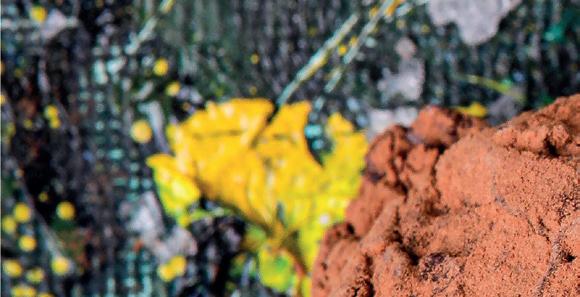


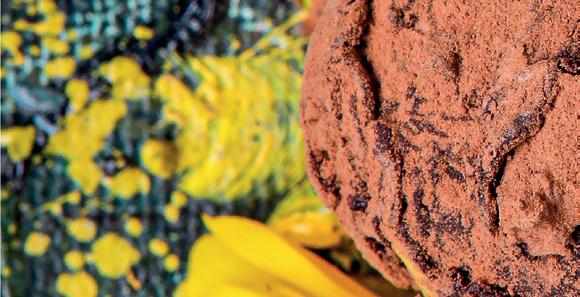











 © James Strawbridge
© James Strawbridge








in the rolling Cornish countryside
the beautiful seaside town of Bude in North Cornwall, Wooda is a family run holiday park offering a variety of self-catering accommodation, as well as touring and camping pitches. With beautiful sea views, five star facilities and a range of on-site features including Restaurant, Coffee House, Cocktail Bar, Takeaway, Nature Trail, Farm Animals, Tennis Court, Badminton Court, Gym, Pitch ‘n’ Putt, Fishing Lake, Secure Dog Field and Playground to name a few, it is has something for everyone to create holiday memories that will last a lifetime! Luxury Lodges | Cottages | Holiday Homes | Touring & Camping www.wooda.co.uk | stay@wooda.co.uk | 01288 352069 Wooda Farm, Bude, Cornwall, EX23 9HJ woodafarm woodafarmholidaypark
Located
above
A Fine INSTITUTION























 WORDS BY LUCY STUDLEY
WORDS BY LUCY STUDLEY
Any number of towns across this country would just kill to have a place like Mannings.” That was the verdict of food critic Jay Rayner – never one to bestow unwarranted praise – when a chance visit led to an unexpected review a few years ago. In an industry where new openings and the latest food trends are consumed with a ravenous appetite (and often quickly discarded in the original packaging) longevity and consistency are precious commodities. In the heart of Truro, Mannings has been serving up great food and drink, and welcoming hotel guests with warm hospitality, for 30 years – winning hearts and minds in the process.
Lynn Manning is the driving force, and she’s a force to be reckoned with. She runs the hotel with energy and a refreshing sense of humour, ably assisted by her sister Kim, daughter Nicky, and a host of loyal staff including Martin Edwards, who’s put in an impressive 30-year
stint as part of the management team. She’ll deftly bat away any compliments, but Lynn’s ability to navigate change is really remarkable. She purchased the old hostelry on Lemon Quay in 1993 and, over the course of three decades, has honed her vision of a haven for weary travellers and locals looking for enjoyment and relaxation in the heart of the city.
The building dates back at least as far as 1797. Located on Lemon Street close to the river, the façade is of Truro’s most impressive landmarks and the site has Grade II Listed Buildings status. Truro was a bustling industrial centre during the early 1800s, dealing in tin smelting, pottery, tannery and wool making, and the port at Lemon Quay was vital for goods coming in and out of Cornwall. Mannings, then Pearce’s Hotel, offered hospitality to merchants, craftspeople, sailors and miners from far and wide – no doubt it was a bustling, colourful place!
CUISINE 52
Celebrating 30 years at the centre of city life, this urban eatery with rooms brings eclectic dishes with Asian and European influences to its tables.
Mannings has a venerable history


ABOVE












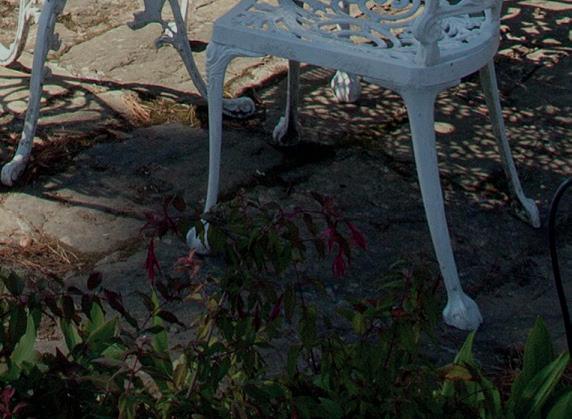





Talland Bay Hotel • Porthallow • Cornwall • PL13 2JB • www.tallandbayhotel.co.uk • 01503 272667
THE LUXURY CORNISH HOTEL AWAY FROM THE CROWDS
The premises, with its large stables, would have been an important focal point for what was then still a town. A mail coach called in every day on the way to and from London, bringing news and visitors to the door from across the country and empire. Lynn transformed the old stables, where coachmen and horses would have been tended to, into spacious apartments in 2003, winning a Cornish Buildings Group award for the sensitive conversion of an historic site.
In 1846 the hotel became The Royal to mark a visit by no other than Prince Albert, although Queen Victoria chose to stay instead on the royal yacht which was moored on the river at Malpas. Later, in 1877, it was Queen Victoria who granted Truro city status. The Royal remained at the centre of life in Truro throughout the late 1800s and early 1900s, when the Industrial Revolution and rising tin prices allowed it to really flourish. During this period, wealthy tin mine owners built elegant townhouses in the city, including the Georgian buildings erected along Lemon Street.
It’s not difficult to imagine the great and good of Truro promenading down this terrace, which has a distinctly Jane Austin feel thanks
to large quantities of Bath stone which was transported for its construction. No doubt they enjoyed themselves in elegant surroundings at The Royal, the city’s preeminent social venue, which was extensively restored early in the 19th century.

During the Second World War a different clientele whiled away their leisure time at the hotel; American troops were billeted here while they trained for the D-Day invasion. They enjoyed films, shows and dances in the old Regent Cinema, and the hotel bar would have been the scene of many a final drink before heading into the horrors of the Normandy landings. Many never made it home.
These days, Truro and its quayside is no longer a trading hub but a bright and busy modern city with cosmopolitan Mannings still in the centre of the melee. Lemon Quay was covered over in the 1920s, paving the way for the pedestrian space at the heart of the city today. Also, home to Hall For Cornwall as well as high street stores, an indoor market, cafés, and independent shops, Truro’s central square hosts everything from artisan craft fairs and food festivals, to parades and community gatherings.
CUISINE 55
Blustery coastal rambles, wind-whipped sea views and off the beaten track adventures; let the quiet shores and local luxuries of North Cornwall work their magic on you this autumn-winter.


Swathed in cosy cashmere knits, sip on indulgent cups of hot cocoa and fill your lungs with sea air infused with hints of wood smoke and salt spray.

Tempted? Choose from over 150 of North Cornwall’s finest self-catering properties spanning Rock, Daymer Bay, Polzeath and Port Isaac.

LATITUDE50 Holidays in Rock - Daymer Bay - Polzeath - Port Isaac +44 1208 869090 holidays@latitude50.co.uk І www.latitude50.co.uk






“There’s always something going on just beyond our doors,” says Lynn. “For our business guests and people on holiday it’s a great advertisement for what a vibrant place Cornwall is.” Truro Farmers Market, which takes place every Wednesday and Saturday and hosts seasonal ‘mini-festivals’ throughout the year is extremely popular with Lynn’s guests, who love wandering through the stalls of local produce and artisan wares before returning to the hotel with their precious finds.
Behind the historic façade, 34 comfortable bedrooms – some with the original beams – a peaceful lounge, an elegant restaurant and an inviting cocktail bar await guests. Business travellers mingle with locals popping in for a drink or a great value lunch (the excellent value Market Menu is a favourite with office workers and shoppers), and later groups of friends gather for cocktails before heading out on the town. Theatregoers take advantage of special packages to eat and stay, while couples enjoy romantic date nights and laid-back Sunday sleepovers. For many Scillonians, a stay at Mannings is an annual tradition, an opportunity to enjoy Christmas shopping and the city’s amenities from the perfect base.
The food offering is chiefly the preserve of Scott Young, Operations Manager at Mannings these past 12 years. Scott grew up in Cornwall but spent many years in Australia, hence the Pacific rim influences of the restaurant menu, which also features Mediterranean and British classics. “When people ask me what kind of food we serve, I simply say – food you’ll enjoy,” enthuses Scott. “Our menu is undeniably eclectic and features dishes from many parts of the world, but they’re all big on flavour and pleasure, and everything is made on the premises with fresh ingredients.”
Head Chef Steve Coleman and his second-in-command Ricky Birch are two experienced hands at the tiller, responsible for the consistently excellent flavours, presentation, and attention to detail Mannings is known for. Two AA Rosette’s are a testament to the culinary excellence guests enjoy at Mannings, from the first-class hotel breakfasts right through to indulgent evening desserts.
The wine list has been carefully curated to offer options suited to the varied cuisine. Lynn and Scott work with St Austell Brewery’s dedicated wine team and Truro-based

CUISINE 59




Cornish escape Find your Luxury eco-lodges boasting state-of-the-art designer features are matched only by the exceptional resort facilities and breathtaking Cornish scenery of Portreath. Starting from just £385,000, make 5* Gwel an Mor your home-from-home today. Gwel an Mor, Feadon Lane, Portreath, Cornwall, TR16 4PE Experience the luxury holiday lifestyle you’ve always dreamed of on the north Cornish coast
HOLIDAY HOME OWNERSHIP Give our friendly Sales Team a call on 01209 844137 or email us at gwel.sales@cove.co.uk Visit cove.co.uk/gwelanmor Where coast and country meet ONLY A FEW Holiday Homes remaining
LUXURY
independent merchant Old Chapel Cellars to make sure there’s something for everyone. They’ve also just launched a Signature Cocktail menu, using many local artisan spirits to create masterpieces such as Nearly Home (Brandy, Pear, Apple, Caramel, Cornish Cider) and Cornish Trinity (Loveday Gin, Bergamot, Vermouth).
Each day the kitchen team serve a ‘Butcher’s Cut’ and a ‘Fisherman’s Catch’ featuring the best their suppliers (all seafood is from Matthew Stevens of St Ives) have to offer, priced by weight. “Our staff can show you your piece of meat or fish beforehand, and you can specify exactly how you want it cooked,” explains Scott. “It’s quite an old-school piece of culinary theatre but we’re proud to offer something a little different.” Lynn picks up the baton: “I think Scott has put his finger on something important there – the theatrical side of going out for a great meal. We carefully designed the restaurant so that
it has a wonderful ambience. It’s somewhere our guests come to reconnect and keep the romance alive!”


She adds: “We don’t have aspirations to offer tasting menus or compete with Michelinstarred restaurants – our hotel guests can go elsewhere in Cornwall to enjoy that. We want our city-centre restaurant and bar to cater with flair for everyone who lives, works, visits, shops and stays in Truro. People know they can come to Mannings and enjoy beautifully cooked and presented food, a great bottle of wine, and friendly service without waiting for a special occasion to do so. I think that’s what Mr. Rayner was getting at when he said that every town should have a place like Mannings.” Lynn is justifiably proud that after such a long and eventful history, Manning’s remains the place to eat, drink, and lay your head in Cornwall’s city. We are indeed lucky to have such a place.
manningshotel.co.uk
CUISINE 61




Land, sea AND SKY

 WORDS BY ROSIE CATTRELL
WORDS BY ROSIE CATTRELL
INSPIRATION 63 Extracted
from The British Beach Guide by Ian Brighouse (Whittles Publishing, £18.99)









HOME S O F T OMORR O W , AV AI L A B L E T O D A Y . Our Zero Carbon Smart Homes™ are better for people and better for the planet. We currently have homes available in Carbis Bay, Mylor and Falmouth. But be quick, as we only have a few le . ver tohomes.com
Having spent the last twelve years journeying around the UK’s coastline, from the edges of Scotland to Cornish shores, Ian Brighouse set out to discover exactly what the beach meant to the individuals he came across on his travels. During this time, he documented their responses and collected over a thousand filmed answers for his website. In a series that celebrates the elemental power of the beach, where land, sea and sky come together, Ian’s beach interviews showcase its profound effect on people who share their perceptions and recollections in the narratives that Ian has carefully collected over the years.
These narratives have formed the basis of Ian’s new book, The British Beach Guide, featuring 130 of Britain’s beaches. On his journey, Ian has learnt how the beach means different things to different people, whether enhancing creativity, decisiveness and energy, being restorative and settling as part of a routine, a reference point through generations, freedom or just fun.


In celebration of us as island people, each of us drawn to the very edges of the UK, it’s only natural that The British Beach Guide should have a chapter on Cornwall’s beaches. Best
known for surfing and the arrival of long sets of waves from the Atlantic, with astonishing granite headlands, one’s gaze is naturally drawn to the power of the sea on the Cornish coast. “There’s a sense of space on the north coast beaches like Crantock, Watergate Bay and Constantine Bay,” says Ian. “You’ll find fishing villages and coastal communities tucked away in the lee of the prevailing winds on Cornwall’s south coast. The transient and resident bird life is exceptional on this coastline too, along with a wide variety of marine life around the whole Cornish coast.
“The beach is a wonderful place for us all to enjoy. Its everchanging nature, whether on a daily or tidal basis or through the seasons, guarantees an element of anticipation and excitement in any beach visit. You just don’t know what you’ll see and who you’ll meet when you go to the beach, meaning that you’ll always have a different answer to the question; ‘what does the beach mean to you?
The British Beach Guide by Ian Brighouse is published by Whittles Publishing, June 2023. Copies can be ordered from manonabeach. com/book
manonabeach.com
 Ian Brighouse
Ian Brighouse
INSPIRATION 65
INSET
In his new book, The British Beach Guide, Ian Brighouse brings us a cross section of beaches on which he asks the all-important question; what does the beach mean to you?
Crantock beach is large and unspoilt. It is a National Trust beach with a large car park behind the tall dunes. If you look back to the beach from the end of either headland, the scene is theatrical, charismatic and wild.

The beach itself maintains a breeze, even on the apparently stillest day and this gives any walk here an invigorating feel. The River Gannel runs to the sea across the beach, covering treacherous tides at its confluence with the Atlantic.
On a wild day, to crouch in the lee of a rocky outcrop down by the water on East Pentire, as the wind howls above, is quite an experience. Only inches from the pounding Atlantic breakers, the early morning sun explodes out of the clouds to the left in golden shafts, lighting white horses on the storm-tossed waves. The sound is elemental, indescribable; unexpected walls
of white water rise rhythmically between the torn rock at your feet. More than most, this is a beach that stays in your mind’s eye long after you’ve left it.
Richard – “It means peace and quiet, solitude at times, a chance to get away from everyday problems, I suppose. We live in a city. It’s a very busy lifestyle and now and again it’s just great to be able to get away from it all, to walk the dog on the beach and it is a beautiful place.”
Wenna – “The beach means coming home, to spend some time with my Mum and the dogs. It’s funny how you miss it so much when you’re not around, so I try to soak it up while I can.”
Elaine – “If ever I feel stressed, I just walk to the top of the sand dunes and look down onto glorious Crantock beach and the stresses melt away.”
INSPIRATION 66
Crantock




This is one of the most beautiful, pristine beaches in Cornwall. It sits below the Minack Theatre, which is carved into the cliffs above. Standing at the head of the beach is the tiny cable house designed to help to send telegrams to America.

There are very impressive square blocks of granite in the western cliffs, almost pink in certain light. In high summer I remember a calm sea shining silver, the breakers almost translucent as they arched and fell on the golden sand. Visitors milled about.
You could sense the pressure lifting from their shoulders as they walked the beach or sat gazing out to sea. They couldn’t have found a finer spot. This is a magical beach in any weather and season, nestled on a finger of land by the wide Atlantic Ocean.
Jan – “The beach means everything to me. We are always drawn to the beach. We come down here as much as we can. All of the time that you are working hard, you are part of the big machine. As soon as you come back to the beach, you realise there is a lot more to life than just work.”
Jane – “It looks really lovely. The tamarisk is coming out now and the honeysuckle is just starting to come into leaf. There are primroses all around the edge here, a few gulls flying, very peaceful.”
Liz – “The colours of the sea at Porthcurno never cease to amaze me – the white sand is made up almost entirely of tiny, 30,000 year old seashells which extend well below the water line, giving the sea a bright turquoise colour – you could be mistaken for thinking you are in the Caribbean. Having travelled the world during my time with British Airways, Porthcurno beach is hard to beat!”
INSPIRATION 69
Porthcurno
Porthmeor
Backed by the popular Tate St Ives gallery, this is the most well-known St Ives beach, with the best surf. I recommend the view from the headland below St Nicholas’ Chapel, showcasing the depth of the beach’s bay and its place on the edge of the town. There’s a great walk round to the west from here.
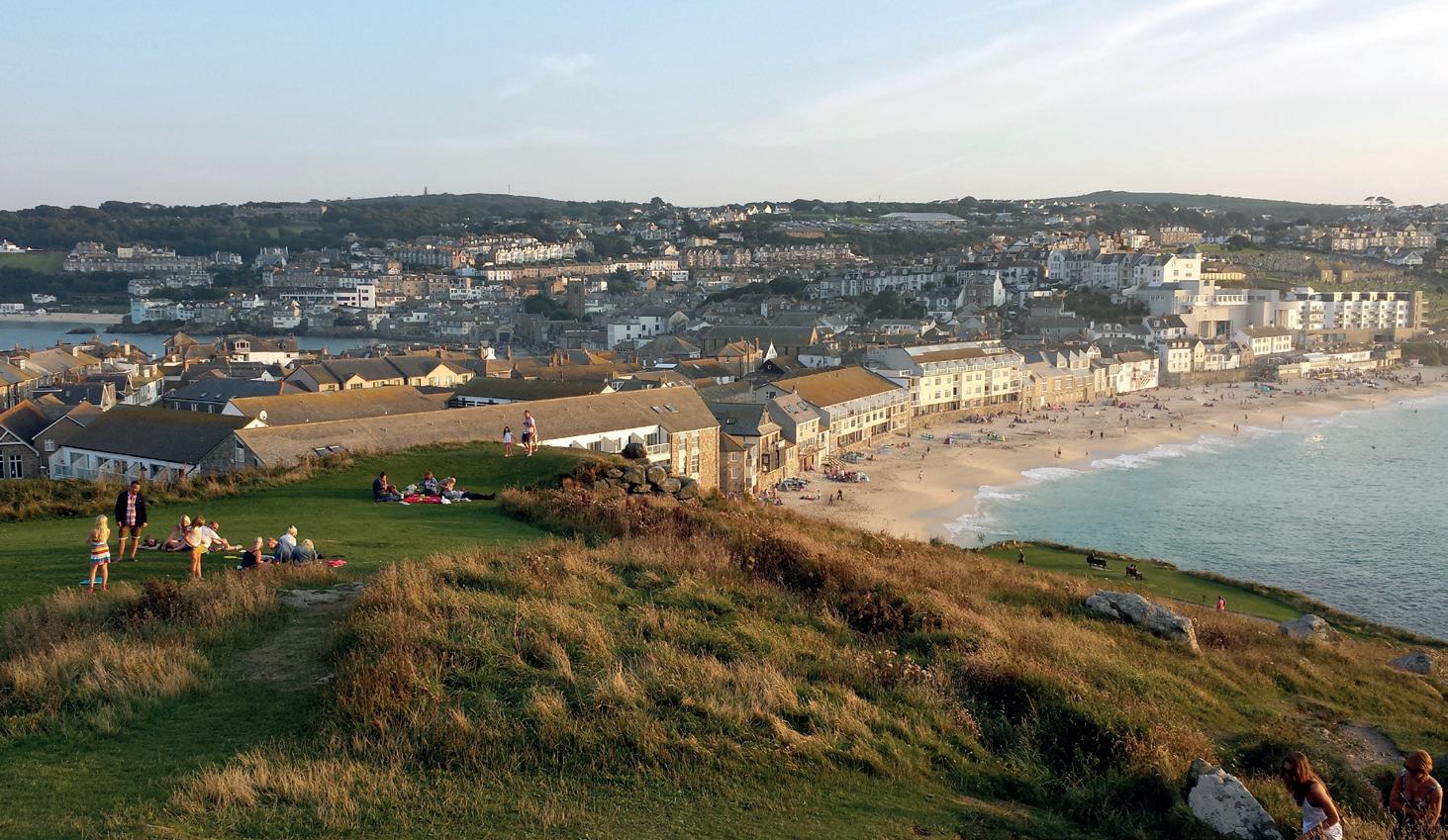
There is a rural, almost primeval feel as you make your way along towards Zennor and Morvah, part of wild Penwith. I remember one winter visit. The morning sun was low. It lit the waves out at sea but hadn’t yet reached the sand. The contrast was striking, highlighted by the white foam of the surf against the dark, golden sand. The white sea spray against the black rocks created a dramatic contrast.
On another occasion it was a bright end to the day, with the sun starting to sink in the west over the beach. There were still plenty
of people on the beach, but the beachside cafe was full and well-heeled partygoers promenaded, anticipating the pleasures of St Ives in the evening.
David – “It’s just a place where you can always be at one. You don’t know where the gap ends between the land and the sea. It’s just really peaceful. It eats into your soul. You don’t know where it comes from. It’s just an elemental dynamic. There is nothing more powerful than the sea.”
Jane – “I get drawn back to the beach because of its mysteries and its possibilities, so it has something almost magical about it. I just look beyond the sea and maybe think, maybe dream about what there might be.”
INSPIRATION 70


RIVERSIDE bliss
Made for a life of peaceful solitude, with no immediate neighbours, Gamekeepers Cottage is a rare gem indeed. Surrounded by woodland and rolling countryside, the riverside cabin enjoys views that stretch out over its grounds and the adjoining Glynn Valley, as well as fishing rights onto the Warleggan River.


Having benefitted from considerable refurbishment and investment, every effort has been made to retain as much of the character features as possible, resulting in a charming property in the most magical Cornish setting, which is reflected in the interiors throughout the home. The accomodation features an open-plan kitchen and living space, alongside a comfortable bedroom and a luxurious bathroom with a walk-in shower and bath tub. The eight acres of gardens and grounds include a beautiful lake to complete the picture-perfect scene, making for an idyllic private country retreat or holiday let.
GAMEKEEPERS COTTAGE
Guide Price £650,000
ROHRS & ROWE 01872 306360
info@rohrsandrowe.co.uk
rohrsandrowe.co.uk
PROPERTY 72
A private sanctuary in the form of a gorgeous cottage set in eight acres of magical Cornish countryside.






COASTAL contemporary
A stunning four-bedroom coastal townhouse offering 1806 square feet of accommodation.
Number 3 The Strand occupies a prime position in a secure gated community in the sought-after family area of Porth Beach. As you enter to the property on the ground floor you are welcomed by the entrance hall and two double bedrooms along with a family bathroom, with the bedroom to the rear benefitting from its own private courtyard. A modern and contemporary first-floor open-plan living space, flooded with natural light from the floor-to-ceiling windows, incorporates a fully fitted kitchen with centred island, dining and living space, all complemented by a sunny balcony with frameless glass and access to the rear enclosed landscaped garden.

Upstairs are two further en-suite double bedrooms with the principle benefiting from a further balcony and impressive apex glazed windows, the perfect place to unwind after a day in the surf and watch the magical Cornish sunsets.

NUMBER 3 THE STRAND
Guide price: £795,000
DAVID BALL LUXURY COLLECTION
01637 850850
sales@dba.estate
davidballagencies.co.uk
75 PROPERTY
OFF THE beaten track
A unique timber-clad, four-bedroom home set in Cornish countryside above the charming village of Port Isaac.




Constructed in 2021, and expertly designed and furnished, Skylark enjoys an elevated position with far-reaching countryside and sea views overlooking Hayle Bay and the north Cornwall coast. Boasting high ceilings, wood floors and an abundance of natural light, this unique four-bedroom family home cleverly blends reclaimed and modern features throughout.
The striking blackened timber exteriors lead effortlessly into light-filled interiors with reclaimed wooden floors and cool retro touches, setting the tone for the spacious and relaxed home with generous open-plan living spaces. Bifold doors off the large kitchen/dining room makes for an easy transition out onto a sun-soaked terrace with far reaching views of the ocean – a perfect spot for outdoor dining or relaxing as you watch the sun setting low.
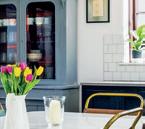
SKYLARK Guide Price: £1.5M
JB ESTATES 01208 862601








sales@johnbrayestates.co.uk





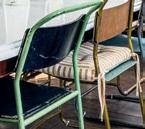





johnbrayestates.co.uk
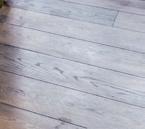







PROPERTY 76



A Pre-Raphaelite STORY love
 WORDS BY HANNAH TAPPING
WORDS BY HANNAH TAPPING
Aspectacular exhibition tracing the stories of Arthurian legend and the Pre-Raphaelite artists will complete its journey at Falmouth Art Gallery this summer. Part of a year-long touring exhibition at three renowned British public museums selected for their connection to the stories of King Arthur – the William Morris Gallery in London, Tullie House in Carlisle and Falmouth Art Gallery in Cornwall –each stage of the tour has been tweaked to tell the stories of their particular region. “The Legend of King Arthur: A PreRaphaelite Love Story is the culmination of five years of research into the legend of King Arthur and its influence on the Pre-Raphaelite movement,” explains Natalie Rigby, exhibition curator. “Touring the UK, the show pinpoints the Arthurian legend and the Pre-Raphaelite artists to locations associated with it. Each venue has based its curation upon site-specific links in relation to its history.”
To put some context to the exhibition we have to look back to 1848, when a group of artists and poets joined together to challenge what they saw as the pervasive dullness of paintings exhibited annually at the Royal Academy of Arts. In this group was William Holman Hunt, John Everett Millais, Dante Gabriel Rossetti, William Michael Rossetti, James Collinson, Frederic George Stephens and Thomas Woolner and they were mentored closely by Ford Madox Brown. Natalie goes on to explain: “The belief of the collective was that the classical poses and elegant compositions of the Renaissance artist Raphael – and the artists who came after him – had corrupted academic art. They sought to champion a new form of artmaking. They invented the term ‘Pre-Raphaelite’ and adopted the name, Pre-Raphaelite Brotherhood (P.R.B.).”
“The movement was a major influence on many other artists and has become known arguably as England’s most successful art
PREVIOUS
John William Waterhouse (1849–1917)
Falmouth Art Gallery

ICON 79
The Legend of King Arthur comes to Falmouth in a ground-breaking exhibition.
INSET
‘I am Half-Sick of Shadows’ said the Lady of Shalott, 1915. Oil on canvas, 100.3 x 73.7 cms. Art Gallery of Ontario, Toronto
export. Despite its popularity, the influence of the Legend of King Arthur on the movement has not received much attention and is little understood,” adds Natalie. Frederic George Stephens set out to paint the first P.R.B painting to feature King Arthur in the late 1840s: “It depicts Mort d’Arthur, or the death of Arthur,” explains Natalie, “and shows Sir Bedivere helping the mortally wounded King to find the Lady of the Lake.” The painting, although unfinished, resides in the Tate collection. Many members and associates of the Brotherhood soon followed Stephens’ lead. William Holman Hunt (1850), Elizabeth Siddal (1853), Dante Gabriel Rossetti (1854), Edward Burne-Jones (1858) and William Morris (1858) all produced works with the Arthurian theme.
The grand finale of this spectacular touring exhibition, which tells the story of the links between the legend of King Arthur, the Pre-Raphaelites and Cornwall’s Arthurian heritage, will bring the entire Lady of Shalott series of paintings by John William Waterhouse together for the first time ever, secured by Falmouth Art Gallery as a major part of the exhibition.
Painted over a 20-year period, these have never been exhibited together in the UK, providing an exclusive and unique opportunity to see them all together in Cornwall. Alongside the major works, oil studies, drawings, etchings and sketchbooks
from the series and Waterhouse’s personal copy of ‘Tennyson’s Poems’ with drawings and annotations will also be displayed. ‘Sir Galahad’ by George Frederic Watts, comes from Eton College where it has not left the Chapel since it was donated by the artist in 1897. Tracing the legend of King Arthur across Cornwall, there will be over 60 iconic works of art. While the exhibits have differed slightly between the venues, all have explored the King Arthur legend through the lens of Pre-Raphaelite artists and their followers, who were challenging the conventional paintings they had typically seen at the Royal Academy in the mid-1800s.
The job of bringing the exhibition to Falmouth now lies under the stewardship of Morwenna Lewis, Falmouth Art Gallery’s new director: “I inherited Falmouth’s part in this exhibition from Natalie,” explains Morwenna. “She has played a vital part in this incredible project curating it over a period of five years and putting the wheels in motion with the partner galleries.”
Morwenna is responsible for moving all of the artworks from Tullie House in Cumbria and then their re-installation at Falmouth Art Gallery. “It is a huge task,” explains Morwenna, “as every piece in the collection has to be checked and then hung or installed in the gallery. We have pieces from both private and public collectors with some coming from as far away as Canada.”
ICON 80
TOP
LEFT


RIGHT
 John William Waterhouse (1849–1917)
The Lady of Shalott, 1988. Oil on canvas, 153 x 200 cms. Tate, London
William Morris (1834–1896) King Arthur and Sir Lancelot (Cartoon for Stained Glass), 1862 Watercolour and bodycolour, 45.8 x 33 cms William Morris Gallery
Edward Burne-Jones (1833–1898) Lancelot at the Chapel of the Holy Grail, 1896–98Oil on canvas, 138.5 x 169.8 cms Southampton City Art Gallery
John William Waterhouse (1849–1917)
The Lady of Shalott, 1988. Oil on canvas, 153 x 200 cms. Tate, London
William Morris (1834–1896) King Arthur and Sir Lancelot (Cartoon for Stained Glass), 1862 Watercolour and bodycolour, 45.8 x 33 cms William Morris Gallery
Edward Burne-Jones (1833–1898) Lancelot at the Chapel of the Holy Grail, 1896–98Oil on canvas, 138.5 x 169.8 cms Southampton City Art Gallery

The scale of the exhibition is vast and it was reviewed by The Times as being a “sumptuous swoon of a show.” To enhance the exhibition here in Falmouth, visually impaired visitors are able to access additional information about the exhibition via Bloomberg Connects which offers additional, expertcurated content. A fully illustrated book will accompany the exhibition; this collection of essays, written by internationally recognised Arthurian specialists and notable academics, will explore the legend and its influence upon the Victorian period.
In terms of the importance of the exhibition for Cornwall, Morwenna explains further: “Cornwall is a touchstone location for the Arthurian legend. From the lesser-known connections with places such as Malpas and Loe Bar to the more prominent links with Tintagel, the myth, legend and history that surrounds the story of King Arthur is part of the fabric of Cornwall. It feels to me as if Arthur belongs both everywhere and nowhere and the fact that this is a touring exhibition bears testament to this. It is bigger than anything the gallery has put on before, and promises to be an indulgence
LEFT
John William Waterhouse (1849-1917)
for the senses, capturing the quintessential spirit of the Pre-Raphaelite Brotherhood, delighting locals and visitors alike.” Awardwinning Falmouth Art Gallery is owned and administered by Falmouth Town Council. Family friendly and free, it resides in the Historical Municipal Buildings built by the Victorian philanthropist John Passmore Edwards in 1894. The gallery cares for an outstanding and eclectic collection of over 2,000 artworks, from 17th-century allegorical paintings to contemporary ceramics. It also holds a collection of contemporary automata, an extensive print collection, an illustration archive, and is home to the RCPS Henry Scott Tuke Collection.
This exhibition has been kindly supported by Visit Cornwall, Visit England and Cornwall Museums Partnership. It is being made possible with support from Art Fund and the Government Indemnity Scheme through Arts Council England. After travelling extensively for first two legs of the tour, the final stage of the exhibition can be seen at Falmouth Art Gallery from 17th June – 30th September.
falmouthartgallery.com
Edward Burne-Jones (1833–1898) and William Morris (1834–1896), The Attainment: The Vision of the Holy Grail to Sir Galahad, Sir Bors and Sir Perceval (The Holy Grail Tapestries), 1890–94. Tapestry in cotton, wool and silk, 239 x 749 cms. The Jimmy Page Collection

ICON 83
‘The Lady of Shalott’, 1894. Oil on canvas, 142 x 86cm, Leeds Art Gallery.
ABOVE











AhistorymagicalTOUR


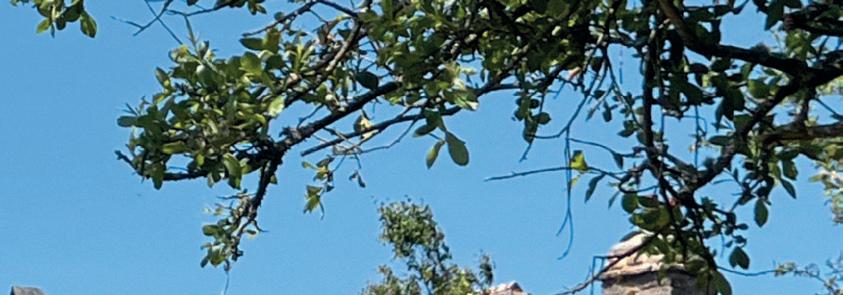






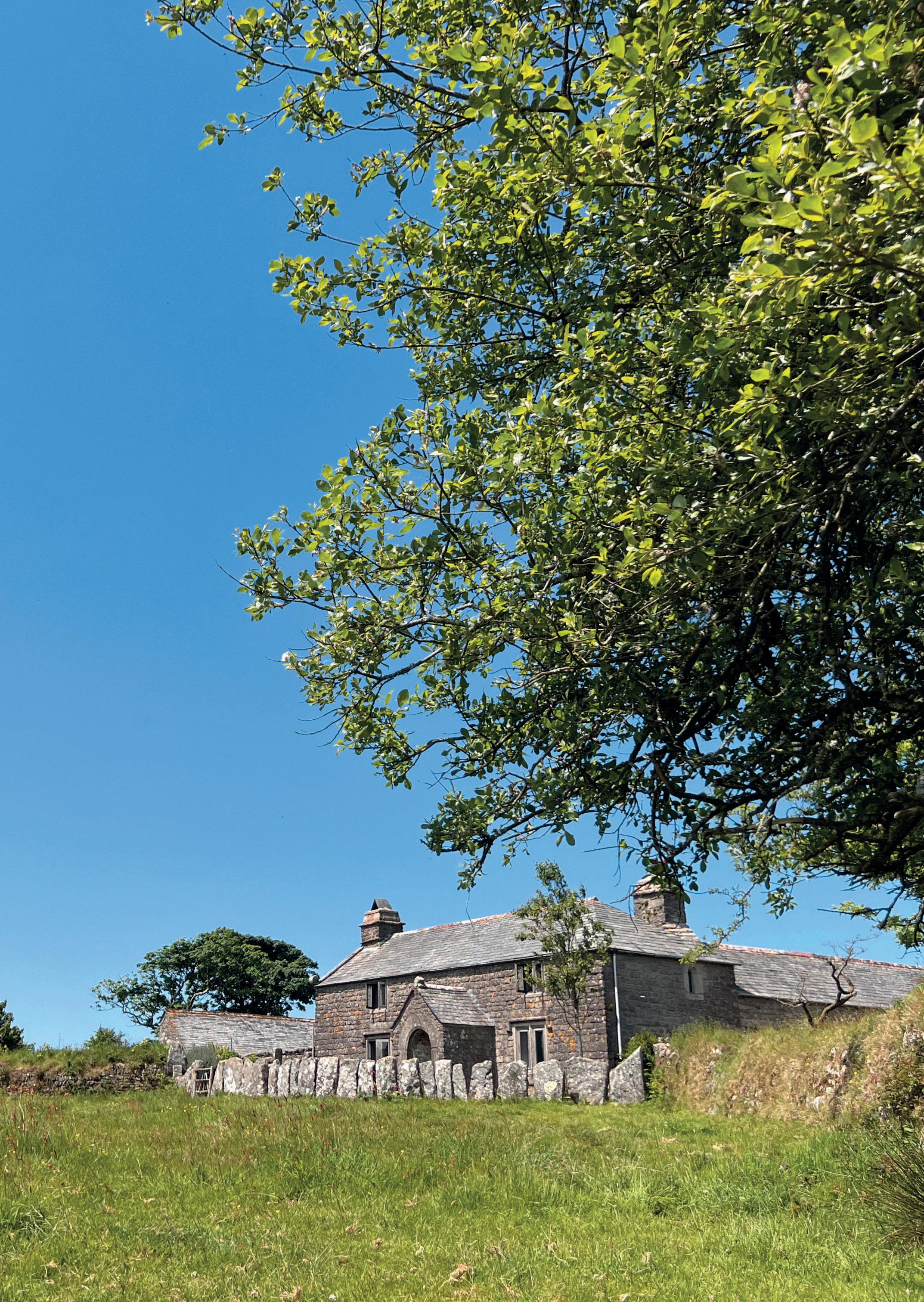 WORDS BY HANNAH TAPPING
WORDS BY HANNAH TAPPING









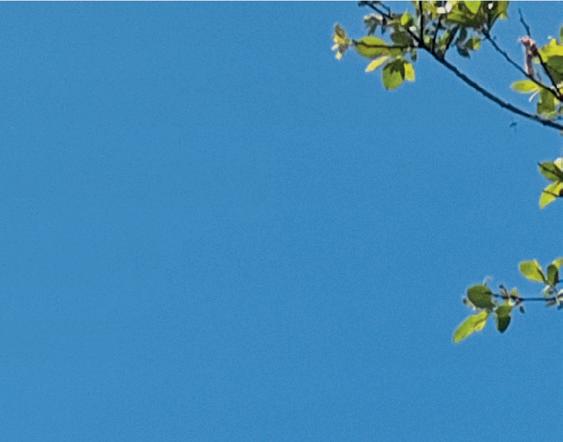
Karen Colam’s background is as diverse as it is venerable, spanning charity management, West End wardrobe supervisor and even co-ownership of a Cornish boat building company. Now, her luxury boutique hotel, The Bolenna provides a base for guests to experience Poldark’s Cornwall, a bespoke and immersive tour experience that digs deep into Graham’s locations, as well as tapping into Karen’s encyclopaedic knowledge of wider Cornwall.

Can you tell me about your background?
I have lived in Cornwall for over 30 years, slowly moving further west with each house move. I settled in Perranporth more by
accident than design, and it was on moving here that I realised one of my favourite stories of all time had not only been written here, but was also set in the area. So, I began to get to know the story in greater depth; in the beginning there was no intention of doing anything with it, it was just for my own interest. At the time I was running a successful business with my younger daughter Holly, however, a personal family tragedy meant that we had to take a step back and reconsider our way forward.
A chance meeting was to be the catalyst for the next chapter in the story. Over a cup of tea, I got chatting with someone who was doing some extras work on a period drama. I was curious as to what they
DIALOGUE 86
PREVIOUS
INSET
In conversation with Karen Colam, whose tours of Ross Poldark’s Cornwall give a unique insight into the world of Winston Graham’s acclaimed novels.
The real Nampara
Karen Colam



ABOVE Poldark locations are peppered across the county
After a days touring, The Bolenna awaits





ABOVE
were making. They mentioned the name Aidan Turner, whose acting career I had followed over a number of years, and it was a lightbulb moment. I knew then that this would be one of the biggest things that had ever come to Cornwall and immediately went upstairs and bought the domain poldarkscornwall.com there and then for £10.19, much to the bafflement of my family, who thought I was mad!
How did Poldark’s Cornwall progress from here?
I liaised with the production company who let me visit the film sets on numerous occasions as well as consulting with Winston Graham’s estate to ensure they were happy with me owning the domain. I set up a fan page on Facebook called Aidan’s Maidens, as well as business pages. After a while, such was the success of the group that some of the Maidens were also invited on set. The coverage extended well beyond the production of Poldark. I was invited to review the weekly showings for BBC Radio and was lucky enough to interview Aidan himself. I started to show visitors Poldark’s Cornwall and people came, and still come, from all over the world to experience the locations; some well-known and some lesser-known secret spots unique to our tours.
In 2019, a private house came for sale in Perranporth and I bought it with a view to
turning it into a luxury, boutique hotel that would provide a base for what had become a successful tour business. Due to Covid, the first few years of operation as a hotel have been a challenge, but we were, from the start, determined to make it the best hotel we could. The Bolenna now boasts wonderful rooms, an excellent restaurant and wine offering and the best cocktails in town.
What can visitors expect on a Poldark’s Cornwall tour?
While it’s not a pre-requisite that our tour guests stay at The Bolenna, it does give us the gift of time to spend with guests outside of touring. Perranporth is the perfect location in Cornwall to have everything you need within walking distance, including a beach. It is less than five minutes to jump onto the A30 and it’s halfway down the county so you can easily head north to Bude and Tintagel, east towards Plymouth, or west to Land’s End and Penwith, all within an hour. For touring Cornwall, Poldarkrelated or otherwise, I recommend May, June, September and October to experience the best of everything we have to offer. There’s no such thing as planning too early or having the first chat with us to arrange your visit, and we offer bespoke tours dependent on what the individual, couple or group wants. Nobody needs to drive the lanes for themselves as we provide a full chauffeur service. And the best part is that the Poldark locations are just a door-
DIALOGUE 89
COMPLETE MARKETING SERVICES
EVERYTHING YOU NEED FOR A FULLY FUNCTIONAL MARKETING DEPARTMENT, BUT WITHOUT THE COST.
Creating amazing and engaging content that delivers your message, across multiple platforms, to engage with your customers.
WWW.THEOCEANAGENCY.CO.UK
ENQUIRIES@THEOCEANAGENCY.CO.UK
opener, as we interweave them with other amazing places. In terms of itinerary, I always ask clients, “what was the thing you first fell in love with?” – it might be the crashing waves and the drama or they might be fascinated by the history and then it’s important to focus on the more historical and heritage aspects of the county.
I think what’s important about the Poldark story, is that it is very much part of Cornwall’s DNA. Reading into the complexities of Cornwall can be quite an arduous process, but I think there’s a simpler way; if anybody wants to get a real flavour of how Cornwall came to be what it was, and what it has become, the Poldark story is the best way of doing this. It’s a very relatable, understandable history of Cornwall, touching on politics, sociology and theology, all wrapped up in a rather lovely story.
Our chefs in the hotel are happy to pack up picnics for our tour guests and, of course, there is always a pasty or a cream tea stop to be had en route – ideally not on the same day! We pride ourselves on the authenticity of our tours being customer-led.
Do you have any favourite locations?
The place that most people want to go is the farm on Bodmin Moor that was used as Nampara. I have an exclusive agreement with the family that own it, where I can take guests there accompanied by myself. There’s also a walk down from Wheal Coates to Chapel Porth which is one of my

personal favourites; as you go down into the valley it has the most dramatic backdrop. A heritage favourite of mine, which entails stepping away from the coast, is South Wheal Francis Mine. It’s incredible to see a development of this size still in such good condition. To stand on the grate above the main mine shaft is a really awe-inspiring experience and it makes you feel the human stories. I always think that these are what make Cornwall special; more so if you visit them when the light is best, whether that be that dawn, under the midday sun or at sunset.
What do you feel makes Poldark’s Cornwall unique?
It’s a combination of our experience, knowledge and attention to detail. There is no ‘one size fits all’ in terms of itinerary. Our strapline is ‘eat, stay, tour, more’ and when we return to The Bolenna at the end of the day, the ‘more’ is where guests are able to take advantage of our own wellness suite, yoga studio and hot tub; or perhaps experience a guided cold-water swim across Perranporth Beach with a personal instructor.
Never one to let the grass grow under her feet, Karen has been inspired by the wonderful guests she has toured over the years, many of whom have been women. She is currently writing an online mentorship program to inspire women into making inspirational life changes.
poldarkscornwall.com
thebolenna.com
DIALOGUE 91
VINESAmongst the





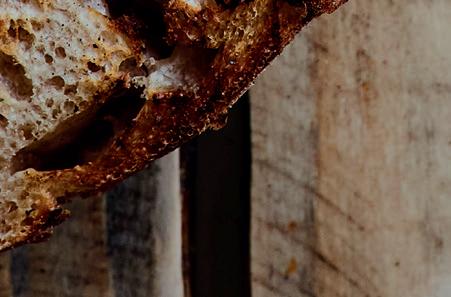




















 WORDS BY HANNAH TAPPING
WORDS BY HANNAH TAPPING
Bringing a flavour of the Mediterranean to north Cornwall’s shores, an exciting new food and wine collaboration opens its doors this summer.
Husband and wife team Katie and Rick Toogood are a force to be reckoned with. Rick was born on the Channel Islands surrounded by fish. His mother trained at Cordon Bleu and her enthusiasm for food, particularly fish, was passed on to Rick. With a passion for food ingrained in his blood, Rick went on to manage various different sites for Fishworks, before realising he and his wife Katie’s common dream of owning their own restaurant. Despite having had no formal food training, founder Rick, along with his wife Katie, discovered their dish inspiration from all avenues, including travelling and visiting other restaurants and spending days working for free at various fishmongers before opening their first Prawn on the Lawn in Islington in 2013.
Katie and Rick have since opened two further restaurants in Padstow, including another Prawn on the Lawn in 2015.
Prawn on the Lawn, Padstow has always been a favourite of ours. Serving seasonal dishes, with sustainability at the fore and Mediterranean influences, the eating experience here is a feast for the senses. Following the success of Prawn on the Lawn, Katie and Rick brought their ethos of honest, seasonal and locally-sourced produce to their new venture; Barnaby’s on Duke Street which opened in Padstow Town in 2018. Serving small plates allowing them to showcase seafood, meat and vegetarian dishes, this bijou eatery rose to great acclaim. Named after Rick’s grandfather and with bees adoring the walls, the eatery not only fuelled the bellies of locals and visitors alike,

CUISINE 93



but also raised thousands of pounds for the Bumblebee Conservation Trust. When it sadly had to close its doors last year due to issues with the building and site, the hunt began for a new home for Barnaby’s.
It is with delight that Barnaby’s will once again this summer be serving seafood, locally-sourced meat and vegetable dishes, all with its signature Mediterranean and middle eastern flavours; this time as a popup restaurant at Trevibban Mill Vineyard and Orchard. Just four miles from Padstow, the venue is accessible, family and dog friendly with ample parking. The new, 45-cover restaurant will have both indoor and al-fresco seating options alongside sweeping views over wildflower fields and vineyards. The site couldn’t be more perfect, overlooking the vines and apple trees that will supply Barnaby’s with wine and cider. Trevibban will also provide the herbs, wildflowers and lamb for their dishes in
the true, traceable, field-to-fork style that Barnaby’s is now known for.

As Barnaby’s opens, Trevibban’s apple orchards will be in blossom and there will be bud burst in the vineyard. A thousand vines of a new disease-resistant variety called Sauvignac, a white aromatic requiring minimal spraying, have just been planted and will be underplanted with clover and birdsfoot trefoil. At Trevibban Mill they farm using organic and regenerative agriculture methods and are always looking at ways to increase biodiversity. Trevibban is currently open Tuesday to Saturday for tours, but there are plans for some later evenings in high season so customers can stay a little longer before heading downstairs to Barnaby’s.
Speaking to Katie, I am keen to get a sense of why they chose Trevibban for Barnaby’s new pop-up home: “We’ve always loved Trevibban Mill – it was one of the first places
CUISINE 95
we visited when we moved down eight years ago. It’s such a unique and special place, so close to Padstow, but when you’re sitting in the wild-flower garden looking out over the vines you could be in the middle of the Tuscan countryside. Their award-winning wines are fantastic and we’ve stocked them in both Prawn on the Lawn (Padstow and London) and Barnaby’s since day one. The owners, Liz, Engin and Tom are amazing people and have been a huge support to us over the years. It’s been great working with them to get Barnaby’s open for this summer.”

Prawn on the Lawn Padstow’s current Head Chef Eddie Thompson will move to head up the kitchen at Trevibban, working closely with Rick to bring smallplates to the tables. “The menu is truly dictated by what’s around us,” says Katie. “The small plates will change throughout the season, rolling from one dish to another. A perfect example is the St Enodoc asparagus for its six-week season served with mojo rojo butter which will move onto Padstow Kitchen Garden’s courgette flowers which will be stuffed with our own ricotta, olives and oregano. We have daily changing large dishes for table which include cuts of local meat which we break down ourselves, such as slow-cooked Cull Yaw shoulder from Matt Chatfield (Cornwall
Project) which we marinade in preserved lemon, herbs and spices and serve alongside a Persian herb salad. As well as this, we will also have cuts of beef and pork from Phillip Warren butchers. Our fish from George Cleave is also dependent on what’s available at the market, served with sumac butter and dukkah. Finally, we continue to champion the awesome lobsters landed by Johnny Murt straight to our door and grill them with wild garlic butter. The style of food definitely has a Mediterranean-Middle Eastern style to it, using herbs and spices to bring the best out of all the local produce we’re using.
It’s not just the food offering that sets Baranby’s apart as Katie explains: “Our wine list is made up almost exclusively of organic, sustainable and natural wines. We’ve got some interesting ones from Georgia and Lebanon which work amazingly with the food as well as some classics. Trevibban wines make up a good part of the list; we stock their fizz, white, rosé and red, as well as their organic ciders – the apples are grown in their orchards just metres from the restaurant. Cocktails are influenced by our environment – preserved lemon (we do these ourselves) and rosemary (grown in the garden) martini and a frozen apple margarita. We’ve also got our own beers that
CUISINE 96





ABOVE Dine inside or out


we made with Padstow Brewing Company on tap. It’s a proper local experience. We’ve always said that we want it to feel like you’re round at a friend’s house for dinner (a friend who can cook!). It’s fun, unpretentious and the food is banging. We work with the seasons, source locally and we hope people feel like they’ve had a genuine ‘experience’ rather than just coming out for a meal.”
For every meal served, Barnaby’s will once again add an optional donation to support the work of the Bumblebee Conservation Trust, a charity that aims to support the conservation of all bumblebees, rare or abundant. Through their projects, the trust raises awareness by increasing understanding of bumblebees and the social, economic, environmental and cultural benefits which they provide. “We’re super
happy to be working with the Bumblebee Conservation Trust again. We’ve raised over £5,000 for them to date and can’t wait to support them further. Bumblebees are vitally important for pollinating hundreds of plant species, including many crops. But they are under threat from the loss and degradation of our habitats due to pressures such as development, intensive farming and climate change. They run projects all around the UK including a few in Cornwall so it’s great to be working with something so close to home,” says Katie.
Barnaby’s will be open Tuesday to Saturday from June until September. Bookings are now open and reservations can be made online.
prawnonthelawn.com
trevibbanmill.com

CUISINE 99
Discover the stories linking King Arthur and the Pre-Raphaelite artists









The Legend of King Arthur: A Pre-Raphaelite Love Story

See the entire Lady of Shalott series of paintings by John William Waterhouse together for the first time.


Running from 17 June 2023 until 30 September 2023 Municipal Buildings, The Moor, Falmouth TR11 2RT T: 01326 313 863 www.falmouthartgallery.com


FREE ENTRY
Painting










ENERGY

MARTIN HOLMAN
Drawing makes you stronger,” says Denzil Forrester. For this artist, drawing provides the foundation on which he builds his paintings, large canvases in vivid combinations of purple, blue, violet, green, yellow and orange. “When I start a painting,” he points out, “I go back to my sketchbooks; they help me find myself.”

Those drawings might be 40 years old, made when this Truro-based artist was based in London; or they come from a trip to Jamaica in 2019; or they date back only a few months or days. For Forrester, they remain current.
His paintings, which this year alone have been seen in solo exhibitions in Kansas City, Miami and London, often feature a low-ceilinged room in which lots of people, typically seen from the back, have gathered around a central figure. Behind the crowd in this claustrophobic space are tall cabinets
PREVIOUS
like leaning towers with circular features punctuating their surfaces. From the heart of the composition surge diagonal lines: they connect background and front, top and sides of the image to make an invigorating visual experience. Everything seems to jump.
Forrester’s artistic dictum is “paint what you know about: don’t make it up, be honest with yourself”. Making his way as a painter in London in the late 1970s, he knew he had to find subject matter that was special to him. After all, visiting Paris and Amsterdam as a student at London’s Central School of Art and Design, he recognised the artists who inspired him in museums by the subjects that identified them. Through their subjects they unlocked new possibilities, particularly in how to use their materials. Monet had his garden and Cézanne was known by the rigorous way he constructed a still life.
CREATE 102
At his studio in Cornwall, artist Denzil Forrester immortalises the dynamic energy of the 1980s London reggae and dub nightclub scene, juxtaposed with themes of social injustice and vivid recollections from his West Indies childhood.
‘Night Strobe’, 1985, oil on canvas, 277 x 195.5cm (109 1/8 x 77in). © Denzil Forrester. Courtesy the artist and Stephen Friedman Gallery, London. Private Collection. Photo by Stephen White & Co
INSET
Denzil Forrester, 2020. Courtesy Denzil Forrester and Stephen Friedman Gallery, London.
Photo by Mike Newman













TOP
ABOVE
‘From Trench Town to Porthtowan’, 2017, oil on canvas, 127.7 x 162cm. © Denzil Forrester. Courtesy the artist and Stephen Friedman Gallery, London. Photo by Stephen White & Co. Private Collection
‘Eula and sons’, 2022 , 160 x 213cm. Courtesy the artist and Stephen Friedman Gallery, London. Photo by Todd-White Art Photography







TOP
‘Moving Heads’, 1986, pastel and charcoal on paper, 50.3 x 70cm. © Denzil Forrester. Courtesy the artist and Stephen Friedman Gallery
ABOVE
‘Untitled’, 2019. Charcoal and pastel on paper, 59 x 84cm. © Denzil Forrester. Courtesy the artist and Stephen Friedman Gallery, London.
Photo by Todd-White Art Photography
Picasso revolutionised our perception of the figure when he distorted its form to release time within an image through Cubism.
Armed with a place on the MA course at the Royal College of Art, Forrester discovered what he wanted to paint. It has stayed with him ever since, and even after moving from east London to Cornwall in 2012, the nightclubs and street scene of Hackney, east London, dominate the narratives he imagines on canvas. He knew the area well, having grown up in the richly multicultural borough since arriving in England, aged 11, from his native Grenada in the West Indies. Music had been part of growing up, from the house parties of his youth where lovers’ rock played and longlife beer was drunk, to disco and R&B nights at Colvestone Youth Centre’s art studio, run by the father of Forrester’s partner ever since, Phillippa Clayden. Its creative atmosphere encouraged both to become artists.
Concentrating on painting, dance, photography and music, he was introduced to Phebes, a pioneering club for West Indians in cultural exile that attracted black youth from around the UK. Occupying an imposing Victorian building on the same road as Forrester’s home, it had previously been a hang-out for London’s celebrity gangsters. Under new ownership, the basement now hosted sound systems operators who played spaced out bass-heavy dub reggae. Prominent among these djs was Jah Shaka whose playlists had spiritual content; their high energy rhythms played through gigantic mono speakers. Shaka’s sets would start at 1am and Forrester would be there at a table near the back or perched behind the bar. From his vantage point he could watch the
audience, mostly Rastafarian, absorb the music. And he would draw.
The canvases that Forrester has painted from his club drawings best define his distinctive practice. A central figure frequently stands out from the crowd at centre-stage, almost like a priest or guru conducting a service for an avid congregation. The clubbers would group around Shaka to watch him working the turntable and commanding the soundscape. “The dancing is incredible,” he recalls. “The place would be jam-packed and full of movement; the women wear African dress and the men have excellent head gear. The atmosphere was rough and direct. I would focus on part of the room and would stay for three hours, week after week, working away on sheets of A1-sized paper spread over the table.”
His solitary, busy presence at the back of the room was accepted as part of the setting. “Only when I was in New York, in the mid-80s, was I questioned and told I needed permission.” He lived in that city for two years as recipient of the prestigious Harkness Fellowship. He had hoped that the local hip-hop venues on Fulton Street, Brooklyn, would stimulate him just as London’s reggae beat had done, and reconnect him with his subject matter while in America.
The reception he found, however, was different and paper was not allowed in the clubs. But in a nearby bookshop he discovered a book with lasting value for him and Phillippa. In Kimon Nicolaides’s manual called The Natural Way to Draw he found the ‘bible’, as he calls it, that guided his teaching on his return to London for the next 30 years. Forrester’s affinity with the book’s concept was immediate because, by stressing gesture over description, it
CREATE 105
HAND-CARVED ALCHEMY












MEL CHAMBERS, OF ALCHEMY TILES is one of the last artisans in the UK to use ancient 13th century techniques to create multi-awardwinning, handcrafted tiles in a modern-day context.





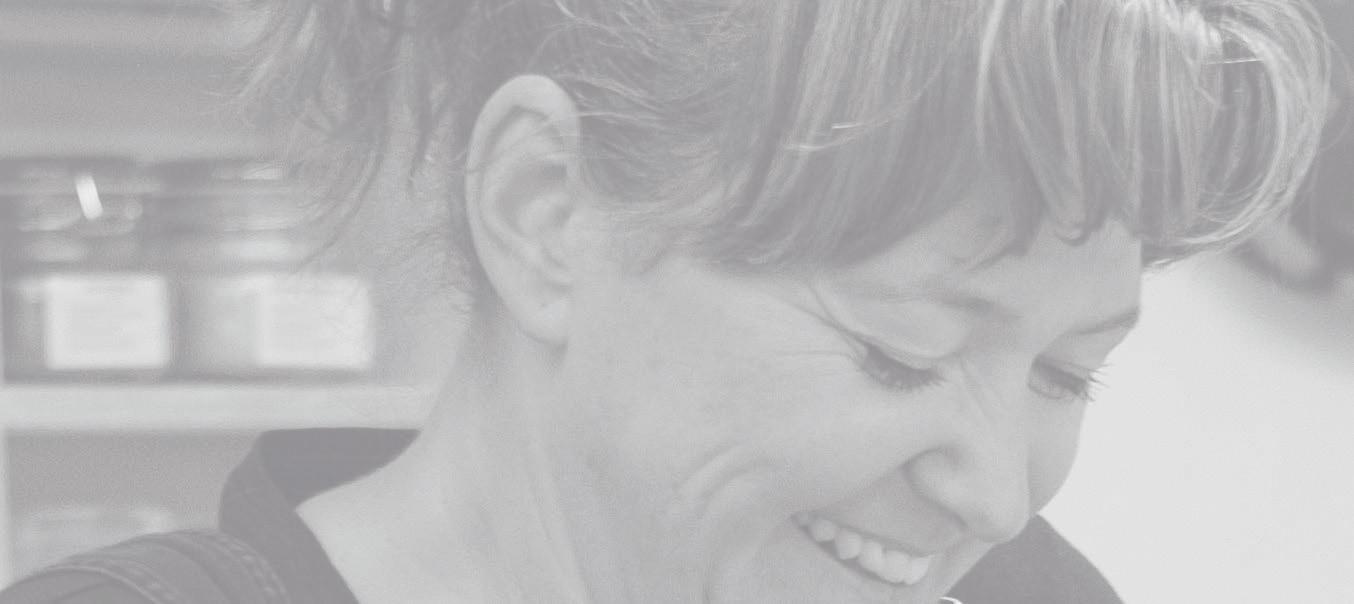

Awarded best hand-crafted tile company for a third year by the Southern Enterprise Awards (SME), Mel’s unique combination of ancient techniques, philosophy and poetry result in tiles that are inlaid with unique coloured clay and inspiring words.









Every tile is bespoke and hand-carved, perfect to personalise any kitchen, bathroom or fireplace. Each one takes a minimum of two weeks to complete and is created to stand the test of time.































T HE S TUDIO | G OLDMARTIN G ARAGE | S AMPYS H ILL | M AWNAN S MITH F ALMOUTH | C ORNWALL | TR11 5EW info@melchambers.com | 07768 193848 | www.alchemytiles.com I NDIVIDUAL T ILES | C USTOM I NTERIORS | H OUSE S IGNS C ELEBRATIONS | W EDDINGS | M EMORIALS
articulated the same demonstrative method he had been using since first entering Phebes.
Each nightclub drawing was made in the duration of a record, in four or five minutes. What emerged on paper were not detailed depictions but sweeping gestures and agitated marks in compressed charcoal made with both hands. “I always imagine it as dancing on paper and you dance with your whole body.” More fluidly abstract than the jagged figuration of his paintings, they are full of expressive information about being in that venue. “I might make 50 drawings each night: half would capture the energy and about 10 would capture the feeling.”
Forrester sought that effect; rather than draw the place he saw (sometimes only vaguely through the clash of light and sound), he spontaneously drew the room as he sensed it, with strobe lighting throwing beams in tempo with the music across the actions and fashions of the dancers.
Forrester found his artistic voice in this environment and constructed a pictorial language to express in oil the dynamic fervour of the clubs’ loyal adherents. After the demands of the working week, he stresses, the club nights “were like freedom for them.” In his paintings, movement takes the form of line and colour, and a perspective that plunges sharply into the imagined space of the canvas. “People tend to draw what they see, not what they know. Drawing energy is the hardest thing to do.” So angular figures move against forceful diagonals like soundwaves that
remodel a room into a hive of sharp facets and repeated rhythms.
Several years into the nightclub theme he introduced a new subject that, nonetheless, still allowed him to paint what he knew. Making work about his family helped Forrester to objectify another aspect of personal experience. Growing up in Grenada, he remembers the endless green, cocoa and bananas, and the nutmeg that was rampant on the island. After his mother left for London, he lived with a local teacher, Ma Pets, and her husband in an adoptive family where he was the only child in a prosperous household. “It was an idyllic upbringing. Water came from a tap in the street but I would wash in a ravine or a river. I have vivid memories of walking through a forest of mahogany at night with no light, frightened out of my wits.”
The contrast with inner city London could not be starker. When his mother called for him to rejoin her and his younger siblings, the transition was difficult: he fell behind at school and nights were spent in the cramped home workshop helping his mother to sew bags to get by. These memories now generate vibrant images, like Eula and Sons (2022), in whicht the familiar shapes of the nightclub –the ceiling lights, the giant speakers – swap meaning in the basement surroundings to become furniture handles, sewing machine wheels and extraction fans. Beams of light turn into beams and joists of flooring. Another experience Forrester has communicated pictorially is being young and black in modern

CREATE 107
INSET
‘Ma Pets’, 2022, oil on canvas, 183 x 153cm. © Denzil Forrester. Courtesy the artist and Stephen Friedman Gallery, London.
Photo by Todd-White Art Photography

ABOVE
‘Blue Jay’, 1987. Oil on canvas, 273.7 x 192.6cm © Denzil Forrester. Courtesy the artist and Stephen Friedman Gallery, London
Britain. He has his own tales of harassment and treatment with insulting behaviour by officials. In 1981 his childhood friend, Winston Rose, died; the subsequent inquest, which the artist attended, passed a verdict of unlawful killing at the hands of the police. Injustice at this searing level has provoked Forrester’s darkest and most haunting work. In Blue Jay (1987), the enclosed, jubilant spirit of the nightclub scenes is transcribed as blue-tinted panic and anger when the central figure confronts the onward rush of hostile uniformed force.
Policemen turn up in his images as an unsettling, authoritarian presence. Forrester recalls being stopped and searched, of being viewed through a stereotype as a threat: “You would be stopped and then never know what’s going to happen.” He acknowledges that community relations have improved, and when Art on the Underground commissioned the mural Brixton Blue (2019) for the entrance to Brixton’s tube station, he revisited an earlier composition, Three Wicked Men (1982), now in the Tate’s collection. With its title borrowed from a reggae track of the time, that work depicts a Bob Marley lookalike Rastafarian marching in step between two officers swinging truncheons. In the intervening decades, perhaps the mood has lightened, the urgency eased. But that combination of cultural symbols has not lost its impact.
The trio reappear in From Trench Town to Porthtowan (2017) against the incongruous backdrop of a beach and bathers. The central figure has exchanged his ghettoblaster for handcuffs, inserting a note of tension, the legacy of London. For in 2012 Forrester bought a property in Truro and, on his retirement from teaching four years later, settled in Cornwall to complete a happier transition.
Although he has known the county for 50 years (Phillippa’s parents owned a house in Mount Hawke and he came west on group drawing trips during his art school studies) and the landscape inspires him, he says he does not need its distinctive light and colour to paint, even though they remind him of the West Indies, he says. Instead, he continues to connect with his past in the clubs by reviewing old drawings that still spark new pictures. Time has not stalled in these images because they exist in a perpetual present and future.
Similarly, his paintings remain large in format and personality. Forrester succeeds in presenting a community’s social rituals on the scale of the great history paintings he studied as a young man in the Louvre in Paris, or the altarpieces he admired in Italian museums during two years he spent in Rome from 1983. His consistency of subject matter is matched by the continued development of his style, its strengthening blend of formal directness and a sophisticated technique.
Awarded the MBE in 2020, his uncommon vision has been applauded by critics and curators for evoking and commemorating the joy, anger and fear that seem true to the Black British experience. At the same time, his work stands out with its commitment to painting, its structures, materials and emotional possibilities. “You have to give yourself over to the feeling; it guides you in the space of the painting. Trust and believe in yourself.”
Denzil Forrester is represented by Stephen Friedman Gallery, London. The exhibition Denzil Forrester: We Culture continues at ICA, Miami, USA, until 24th September 2023
stephenfriedman.com/artists/35-denzilforrester/
CREATE 109

















LOOKING GLASSThrough the
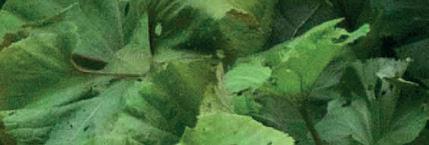















 WORDS BY HANNAH TAPPING
WORDS BY HANNAH TAPPING
Turn back the clock to 1914. Heligan was a thriving, thousandacre estate, a verdant jewel in the crown of Cornwall’s south coast. However, as the men of Cornwall were called up to fight in WWI, Heligan lost its workforce and over the coming years the bramble and ivy tendrils threaded their way over the estate drawing it into a deep hibernation. Dutch-born archaeologist, songwriter and producer Sir Tim Smit, who would later co-found the Eden Project, was the man who was to awake Heligan from its slumber. In bringing Heligan back to its former glory, it was important that it bear witness to the 13 heroic gardeners who left for the battlefields, of which only four returned. The focus here would be unlike any of the traditional restorations of similar estates. It was to be a living, breathing horticultural story of those who had worked there.
Today, The Lost Gardens of Heligan enchant all those who set foot along her paths and trails. The award-winning restoration of the Productive Garden now provides the Heligan Kitchen with over 300 varieties of predominantly heritage fruit vegetables, salads and herbs. Donning a more
sophisticated cloak, the Pleasure Grounds are more formal in their nature with paths passing historic plantings and romantic structures.
In contrast, the innovative Jungle has a microclimate five degrees warmer than the Northern Gardens and plays host to exotic plants gathered by Victorian plant hunters and more recent collectors from across the globe. Unfettered by needing to adhere to a period, the Jungle is constantly evolving, where the only limits are the imaginations of the those who tend it. The wider estate is home to Heligan’s iconic living sculptures; the Giant’s Head, Mud Maid and Grey Lady, who make their silent home along ancient woodland paths. At every turn, natural follies reveal themselves.
Heligan is not one to stand still and a programme of events runs throughout the year using the glorious gardens as its backdrop. From family events to Lost Suppers, and Heligan’s infamous Night Garden, a visit here is a journey of discovery through time, nature and beyond.
FOCUS 112
heligan.com
PREVIOUS
A journey of re-awakening through one of Cornwall’s most magical and mysterious estates.
The Jungle pond

ABOVE
Crossing the Burmese rope bridge


TOP
ABOVE
The Mud Maid
The Giant’s Head


TOP The gate to the Secret Garden ABOVE The Italian Garden

ABOVE
Summer in the Flower Garden



TOP The Reserve Garden ABOVE The Potting Shed


TOP
ABOVE
The Melon Yard
The Heligan squash harvest
OCEAN adventurer
The Sport 900 from Highfield takes RIB cruising to the next level.

Highfield Boats, the leading global supplier of aluminium RIBs, has unveiled its latest addition to the RIB range, the Sport 900, showcasing groundbreaking technology and luxurious features. The Sport 900 is a remarkable offshore cruiser designed for long-distance journeys, boasting an impressive top speed of 60 knots and exceptional stability in rough seas. Its all-weather hull design and extended range make it perfect for maximizing time spent on the water.
Similar to other RIBs in the Sport range, starting from three meters and beyond, the new SP900 model is lightweight and equipped with integrated davit lifting eyes making it easy to tow, launch, and recover. Its durable construction ensures that it will retain its agile performance and resist water absorption or delamination, maintaining its quality for years to come.
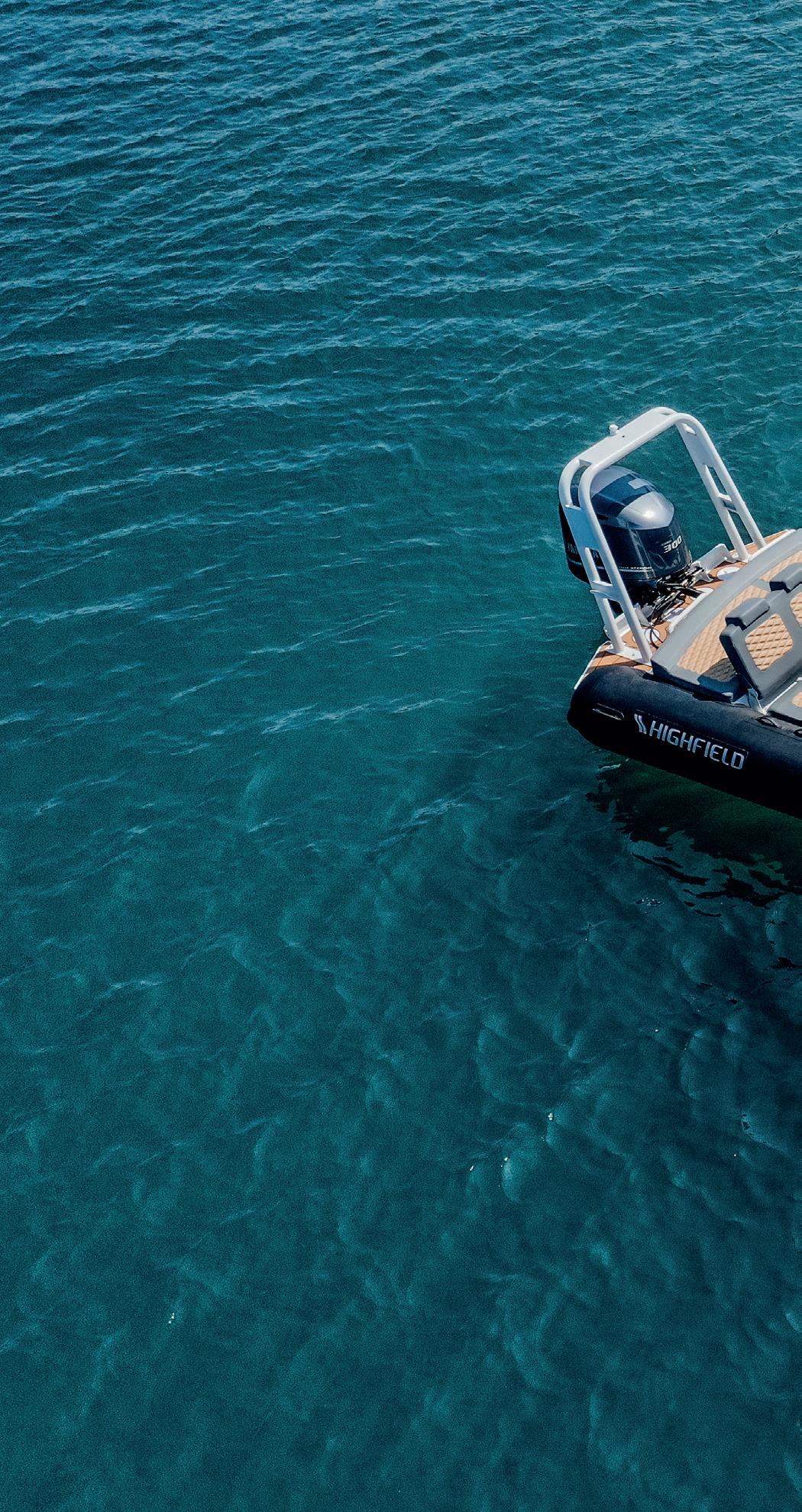
Luxurious additions include a Vitrifrigo refrigerator, sunbrella top, kitchenette, and shower kit. The integrated rear seat with cushion, bow and stern sundecks, and rear table enhance the accommodation space on board. Boasting EVA teak flooring, integrated fuel tanks, exquisite diamond-stitched upholstery, and a spacious bathing platform, each day spent on the Sport 900 promises maximum enjoyment.
Sail Shape Marine, based in Cornwall, is a Highfield dealer offering turnkey solutions making boat ownership simple.
NAUTICAL 120
sailshapemarine.co.uk



Eventide
WORDS BY CARL ROWLINSON
Sustainability. A worn-out word, lost in its own excessive use, with no real meaning or gravity. Used in marketing, with a few exceptions, as a box-ticking exercise necessary to compete in a saturated market – but that was before, before we all changed, all of us. The high-water mark of the pandemic has passed. As a business owner and running a green start up, Covid brought existential crisis and seemingly threatened our survival. However, something unexpected happened during that period of lockdowns and vaccine rolls outs; people stopped, slowed down and took stock. During our allocated time outside, people headed for dog walks in the woods, to the beach and into our green countryside, re-engaging with their environment. As business returned to normal that connection stayed, and a deeper appreciation of our surroundings endured.
As the hive of life began again, lock down eased, and work, family, office, commute, parties, family and holidays came back to us. Words lost but returned, something else stayed; nature, and an understanding of our relationship with it, given back to us as a silver lining to a difficult time. As the offices began to fill and consumers headed back to the shops, we as a community demanded more from our businesses, from our brands, from the places we work from and with. Sustainability was reborn, and placed front and center of everything we do. Internal pressure from staff questioned the environmental efforts of their employers, and consumers selecting
Carl Rowlinson
environmentally focused brands demanded clarity on the claims made.
From this opportunity, new roles were created, new businesses emerged, new brands stood up. Businesses that don’t seize this opportunity, I believe will struggle. To compete, being sustainable now means clarity, honesty, and ambition. Newly created roles as sustainability officers, or roles in Corporate, Social and Environmental governance or carbon accounting will be the roots of this new revolution. And Cornwall walks proudly ahead of the tide of change. Our unique connection with the environment means the businesses that work from here are already implementing strong and robust sustainability strategies. Cornwall has the most number of B-Corp registered businesses, Cornwall sustainability awards celebrate innovation every year and other businesses from up the line look across to Cornwall as leaders in this new area.
Sustainability means something else now –the pandemic changed that – sustainability means us, community, people, and it needs to be the nucleus of every business.
Carl Rowlinson is the co-founder of Plant One Cornwall, a registered Community Interest Company, where every penny received goes directly towards establishing trees and creating woodlands for the benefit of all. plantonecornwall.com

LAST WORD 122 INSET
FROM COASTAL PROPERTIES TO LOFT APARTMENTS BEAUTIFUL KITCHENS AND INTERIORS DESIGNED AND BUILT




Bespoke furniture and luxury interiors handmade in Cornwall – from unique, one-off designs to entire room transformations to tailored joinery packages.


Harnessing 35 years of experience, Rozen’s highly skilled team of crafters are dedicated to the finest standards. Making everything from freestanding kitchen units to bespoke dining tables to beautiful bedroom furniture and more, our craftsmen pour precision, care and artistry into every job.




E S P O K E F U R N I T U R E M A K E R S 01326 290 100 | rozenfurniture.com Cherry Tree Workshop | Ruan Minor | Helston | Cornwall | TR12 7JR
B




























































































































 WORDS BY ROSIE CATTRELL
WORDS BY ROSIE CATTRELL











































 WORDS BY MERCEDES SMITH
WORDS BY MERCEDES SMITH

























































































































































 WORDS BY HANNAH TAPPING
WORDS BY HANNAH TAPPING











































 © John Hersey
© John Hersey
© James Strawbridge
© James Strawbridge
© James Strawbridge
© John Hersey
© John Hersey
© James Strawbridge
© James Strawbridge
© James Strawbridge







































 © James Strawbridge
© James Strawbridge































 WORDS BY LUCY STUDLEY
WORDS BY LUCY STUDLEY











































 WORDS BY ROSIE CATTRELL
WORDS BY ROSIE CATTRELL











 Ian Brighouse
Ian Brighouse






















































 WORDS BY HANNAH TAPPING
WORDS BY HANNAH TAPPING



 John William Waterhouse (1849–1917)
The Lady of Shalott, 1988. Oil on canvas, 153 x 200 cms. Tate, London
William Morris (1834–1896) King Arthur and Sir Lancelot (Cartoon for Stained Glass), 1862 Watercolour and bodycolour, 45.8 x 33 cms William Morris Gallery
Edward Burne-Jones (1833–1898) Lancelot at the Chapel of the Holy Grail, 1896–98Oil on canvas, 138.5 x 169.8 cms Southampton City Art Gallery
John William Waterhouse (1849–1917)
The Lady of Shalott, 1988. Oil on canvas, 153 x 200 cms. Tate, London
William Morris (1834–1896) King Arthur and Sir Lancelot (Cartoon for Stained Glass), 1862 Watercolour and bodycolour, 45.8 x 33 cms William Morris Gallery
Edward Burne-Jones (1833–1898) Lancelot at the Chapel of the Holy Grail, 1896–98Oil on canvas, 138.5 x 169.8 cms Southampton City Art Gallery






















 WORDS BY HANNAH TAPPING
WORDS BY HANNAH TAPPING














































 WORDS BY HANNAH TAPPING
WORDS BY HANNAH TAPPING

























































































































































 WORDS BY HANNAH TAPPING
WORDS BY HANNAH TAPPING


































